
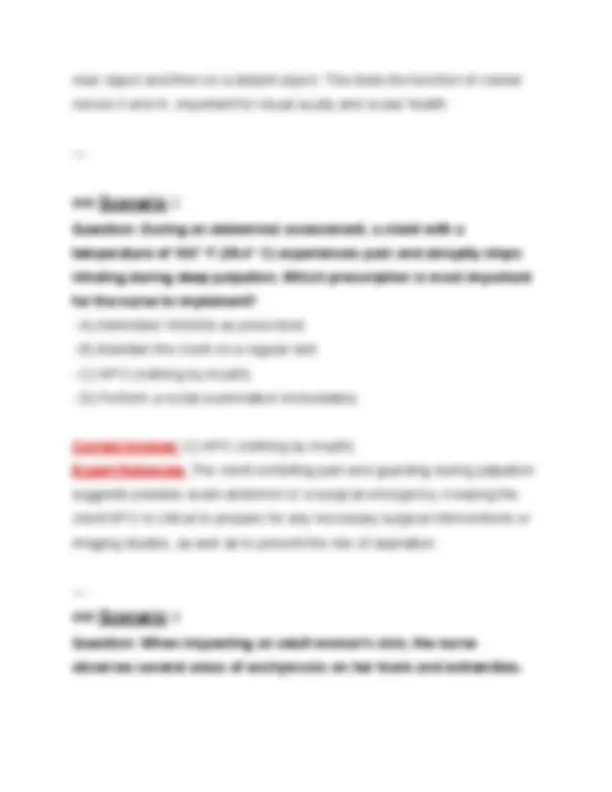
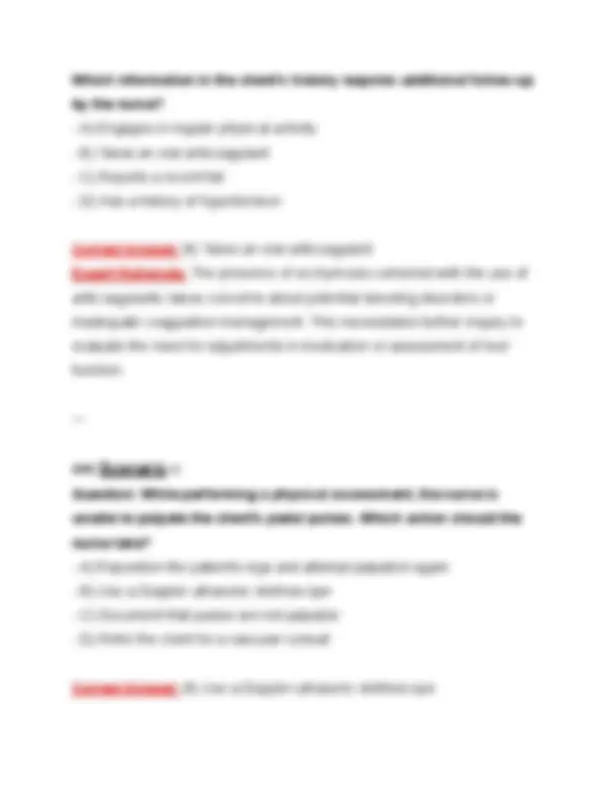
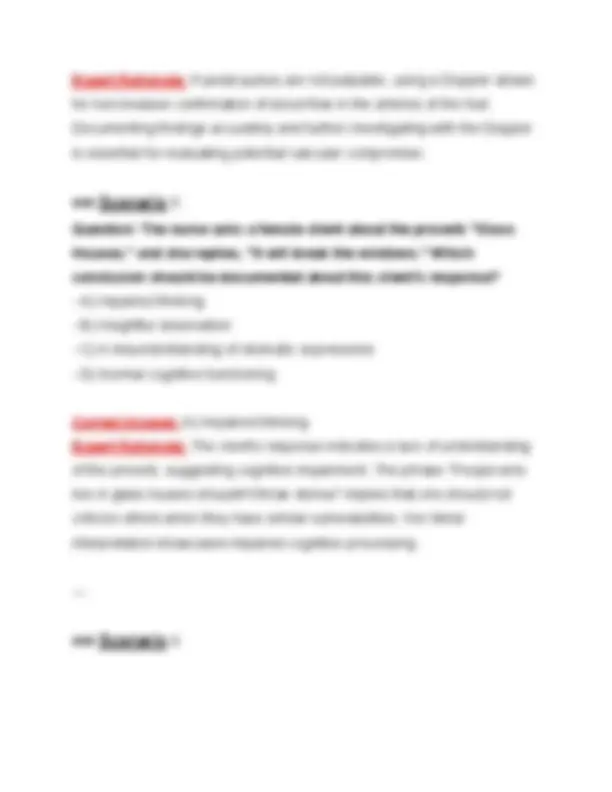
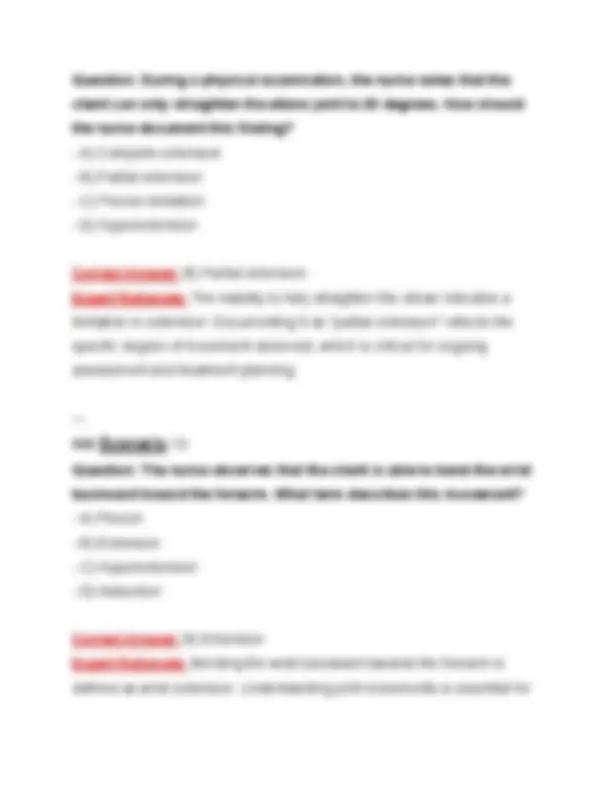
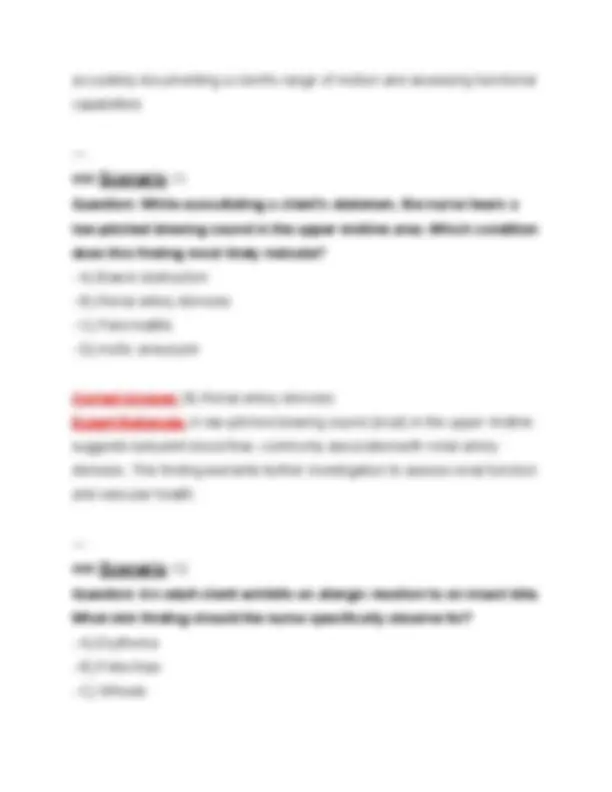
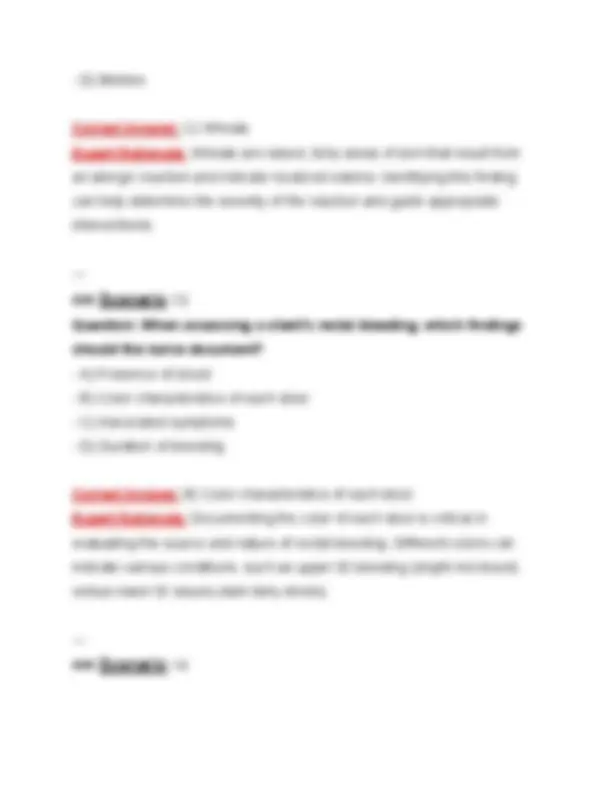
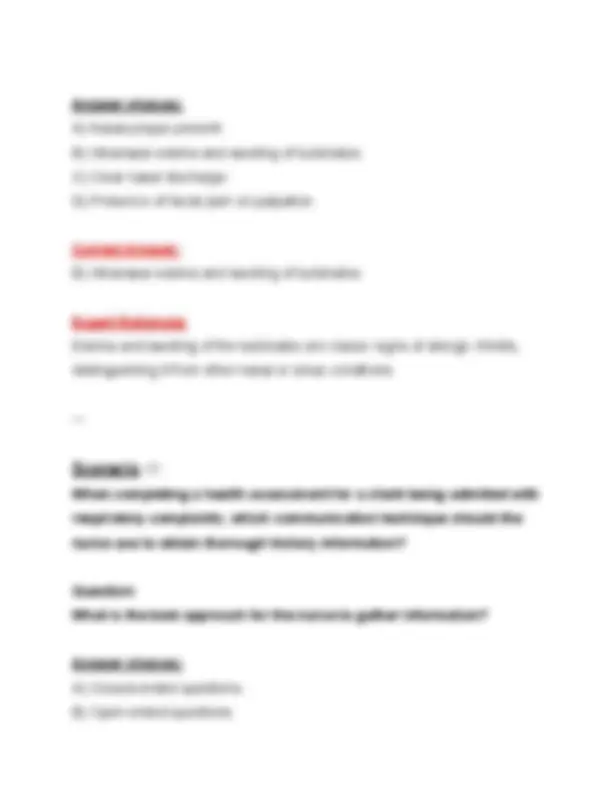
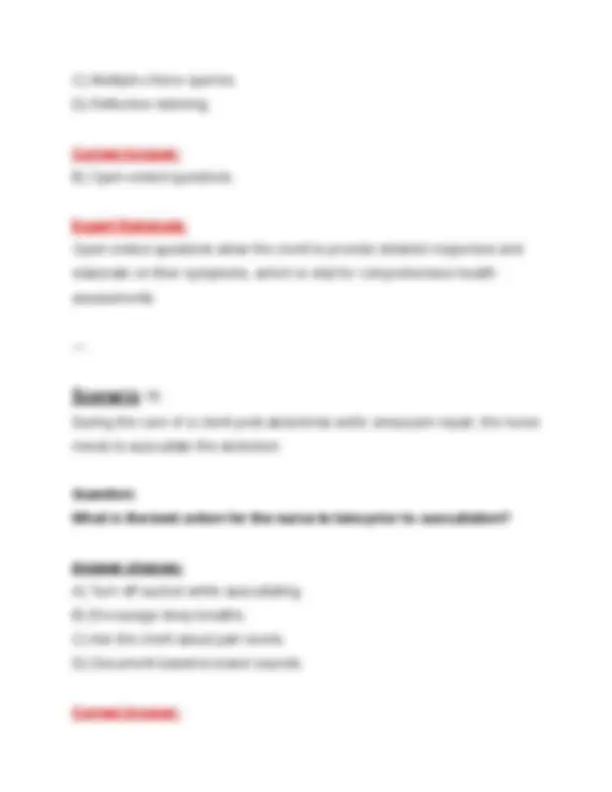
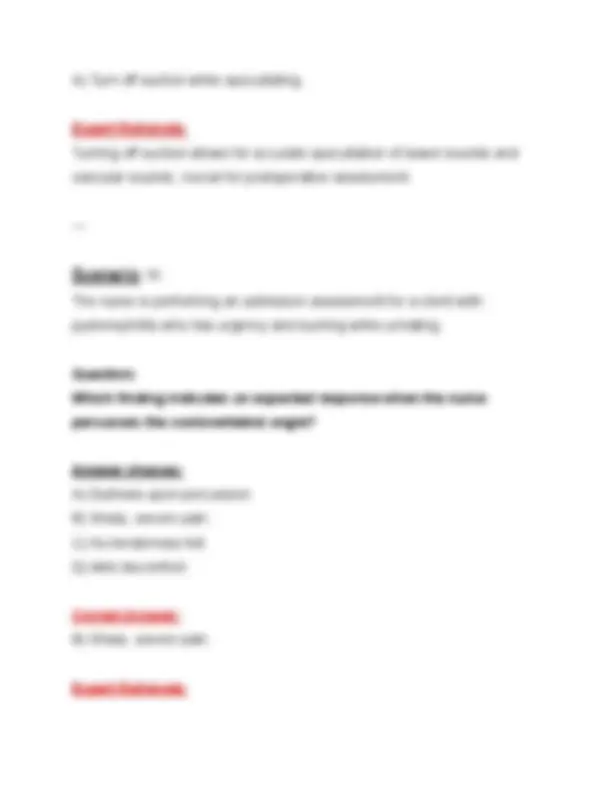
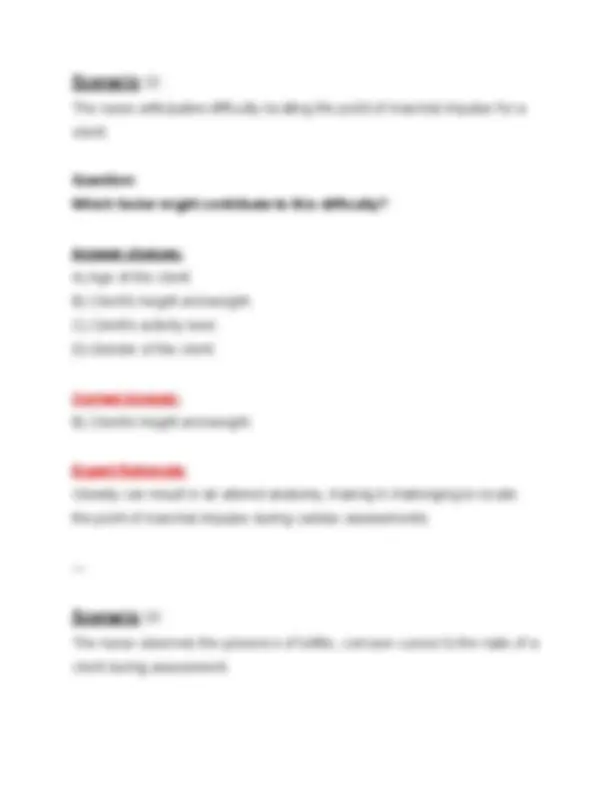
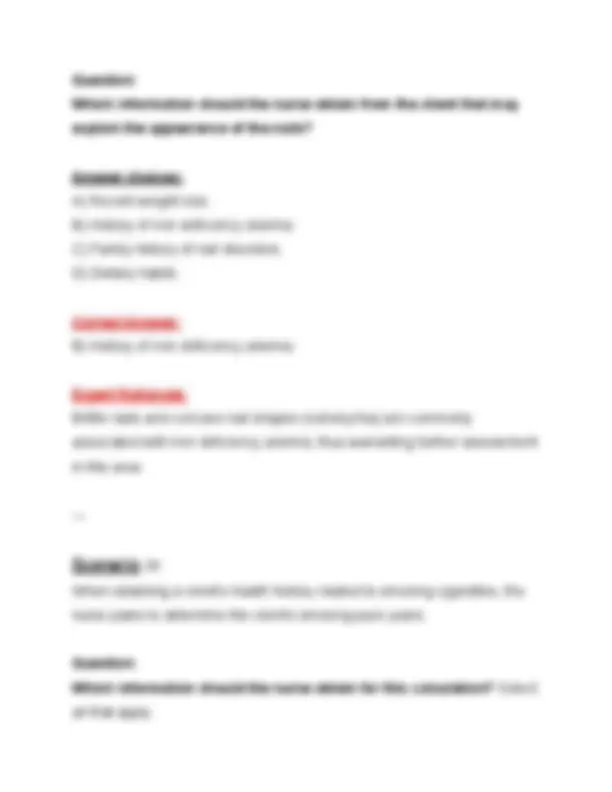
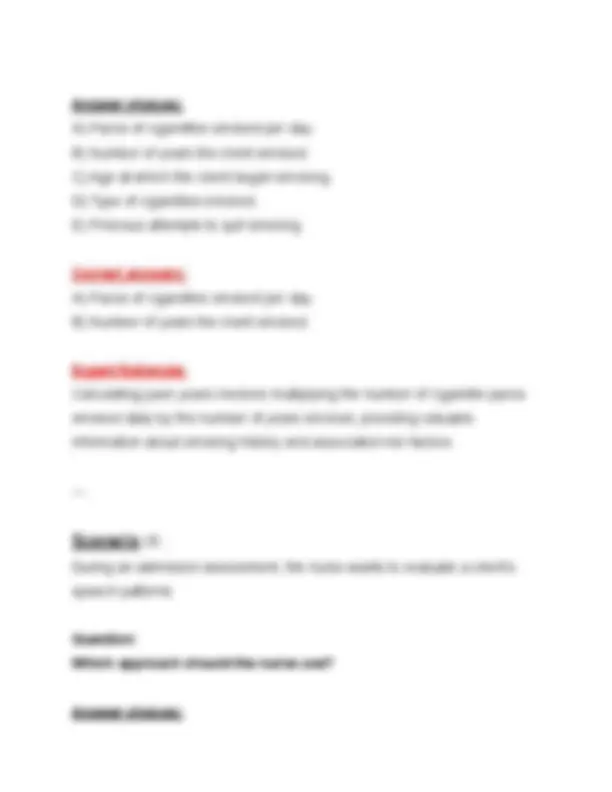
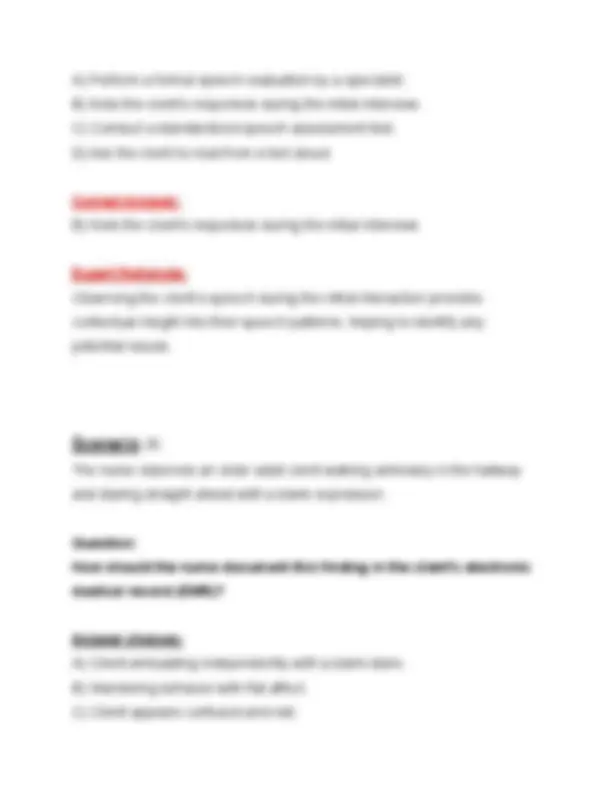
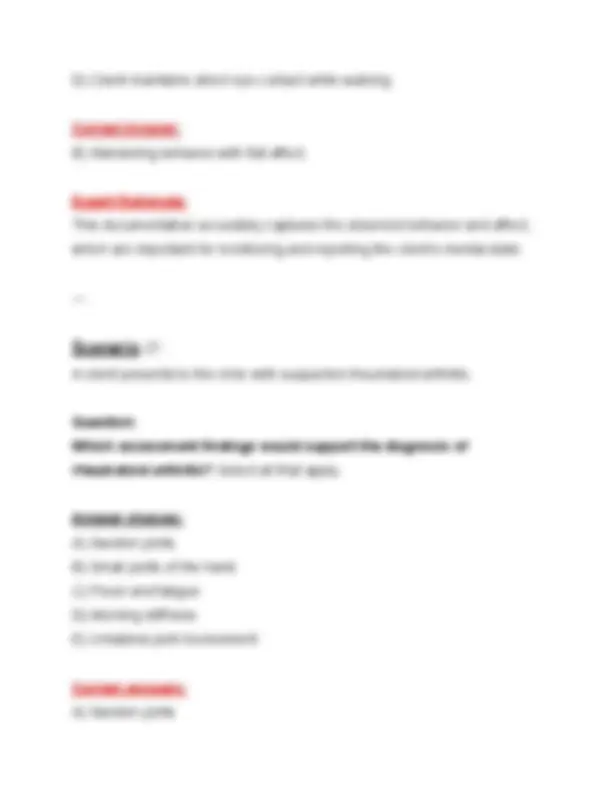
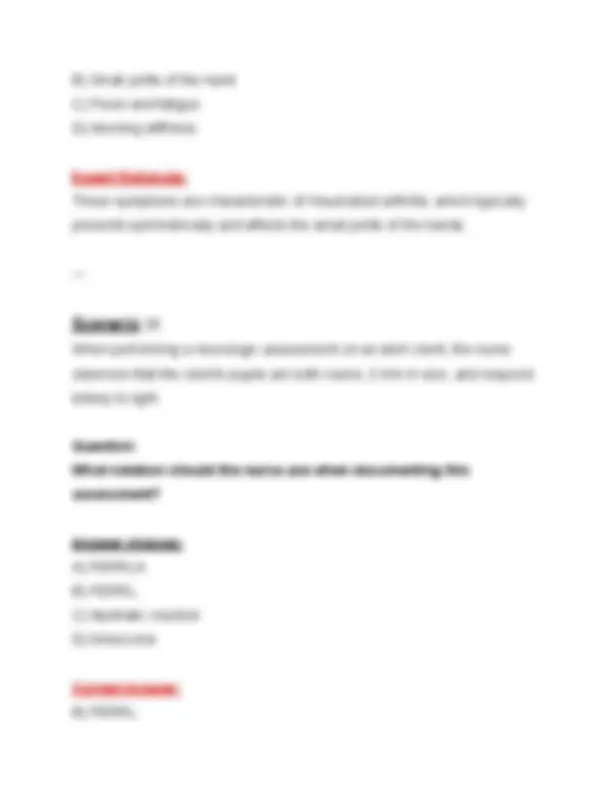
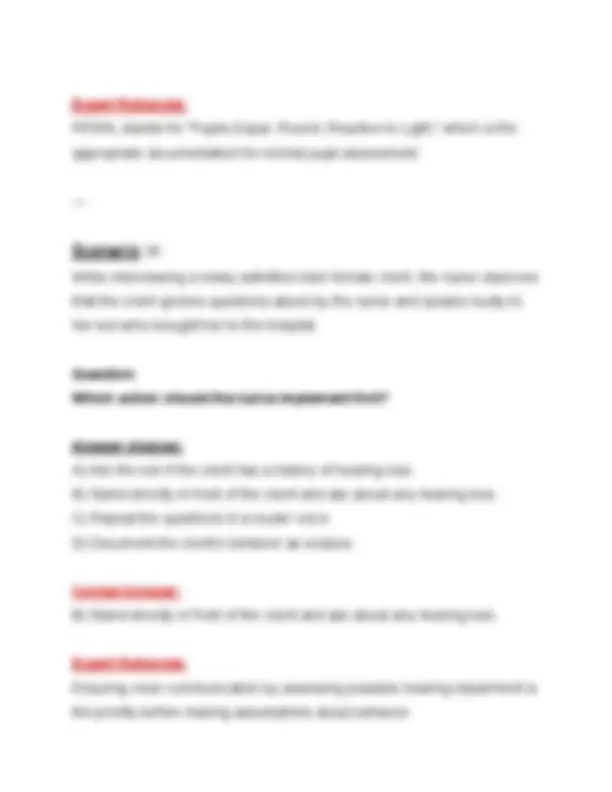
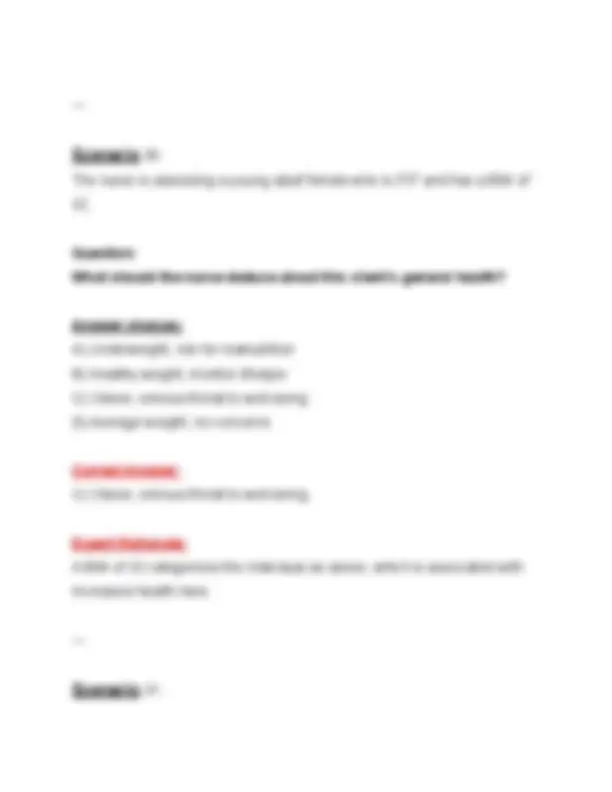
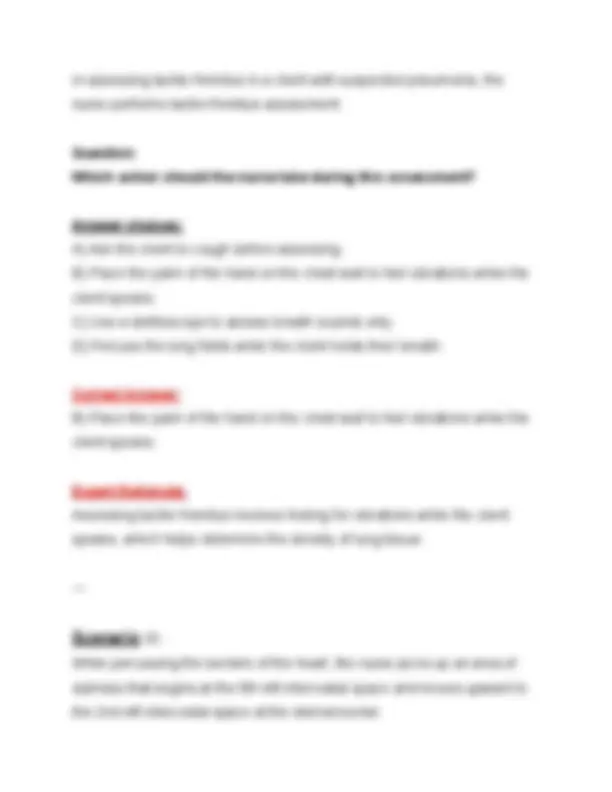
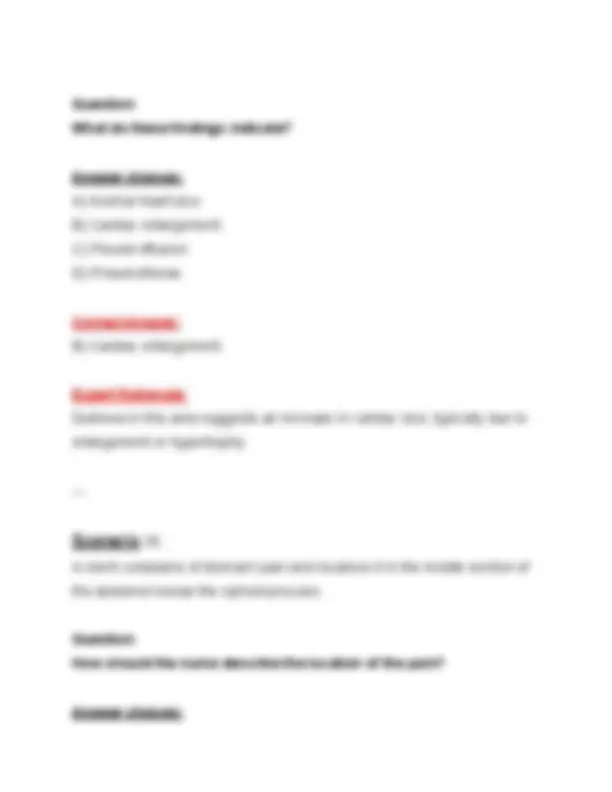
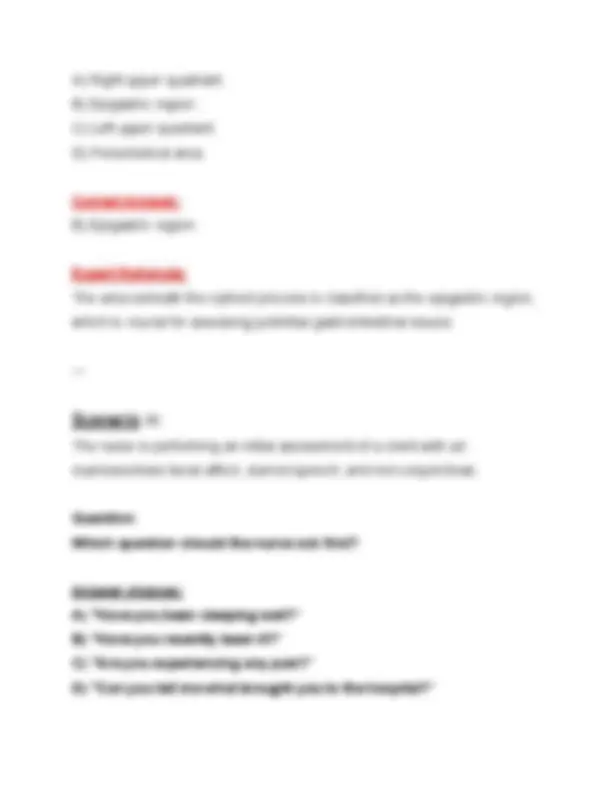
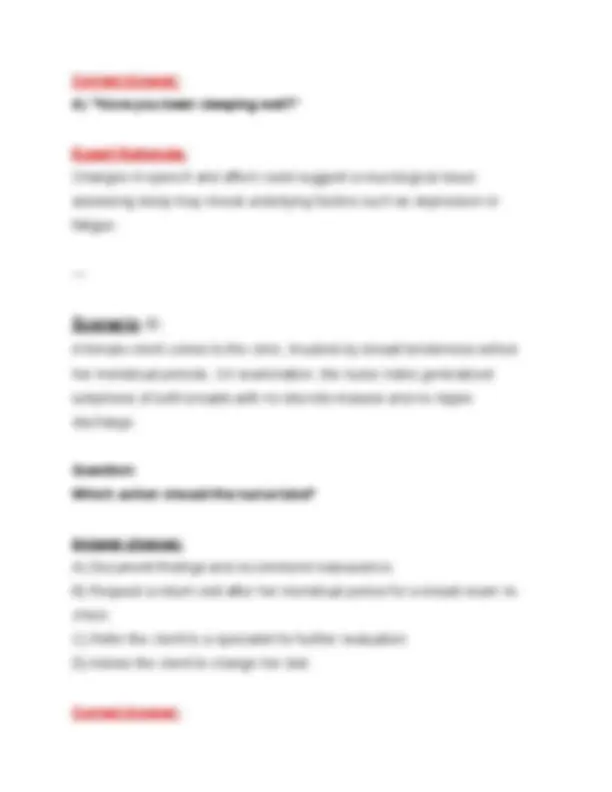
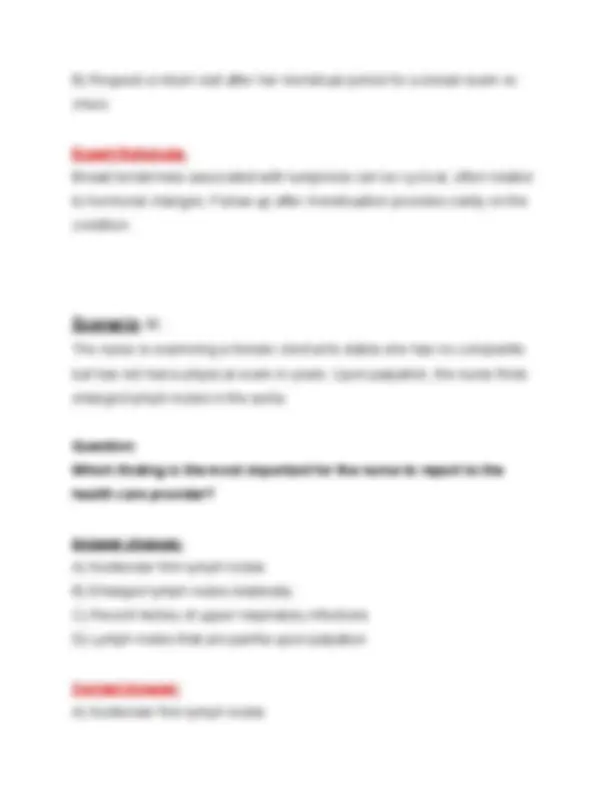
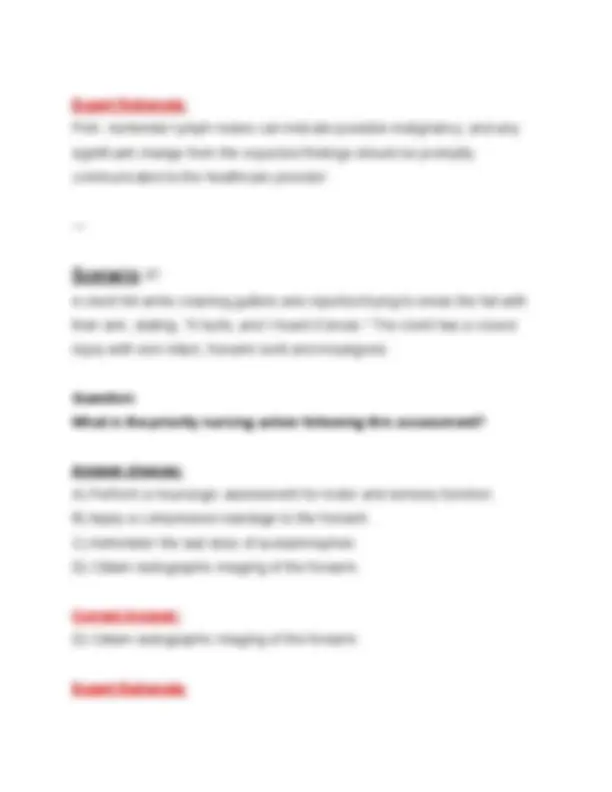
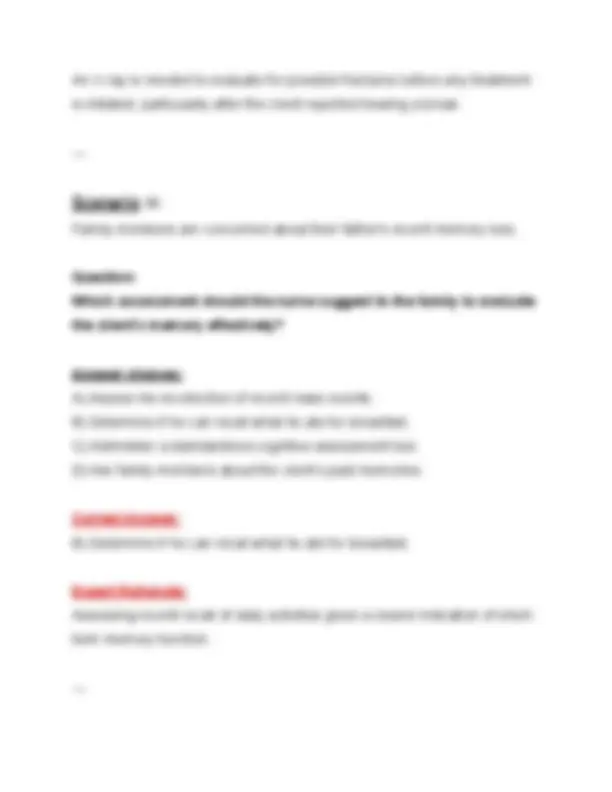
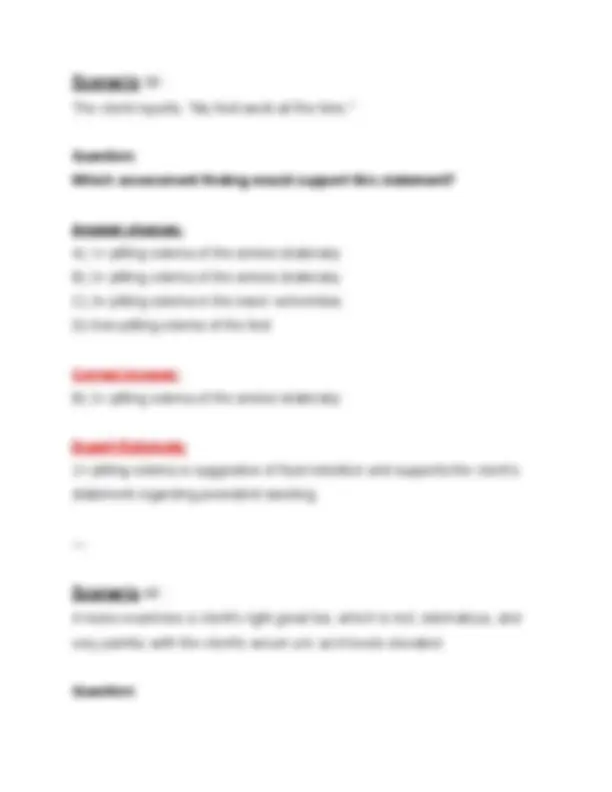
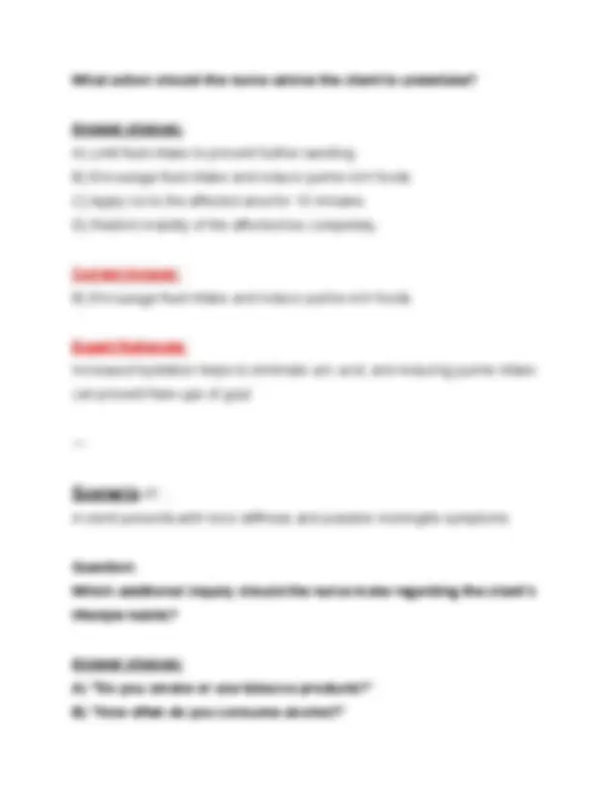
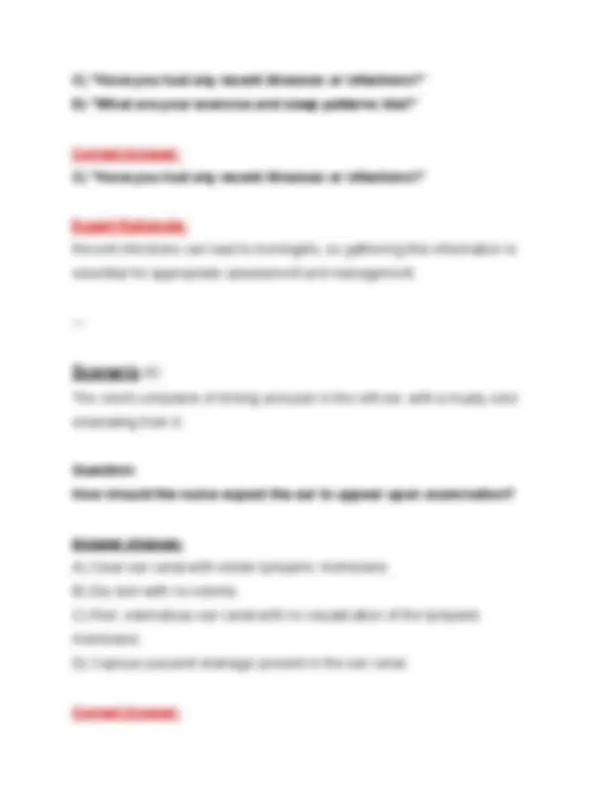
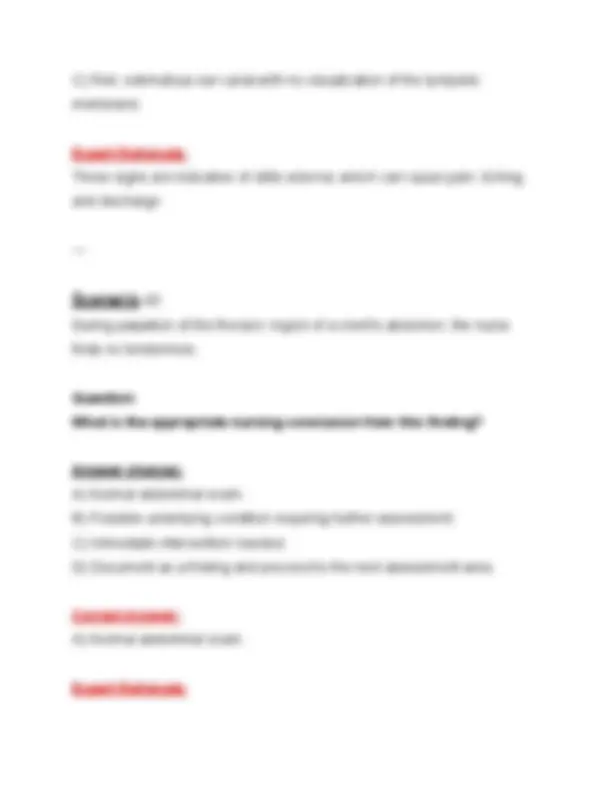
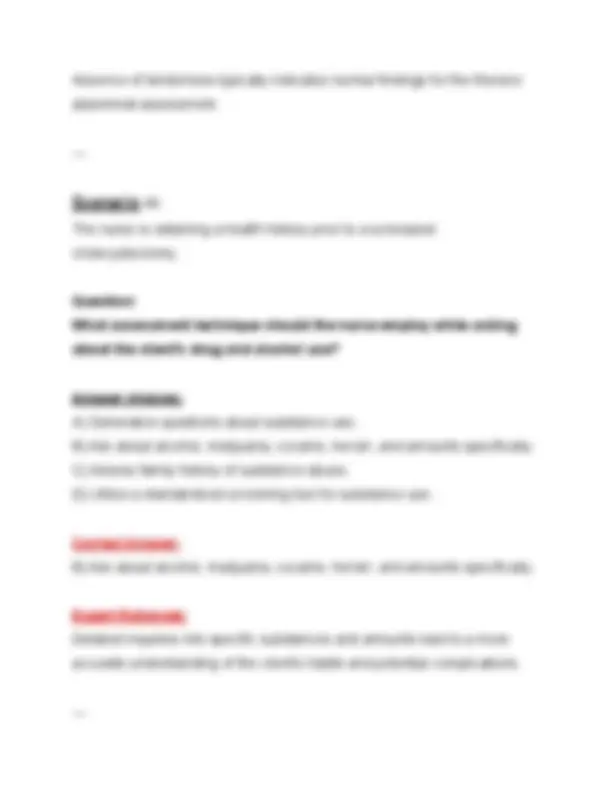
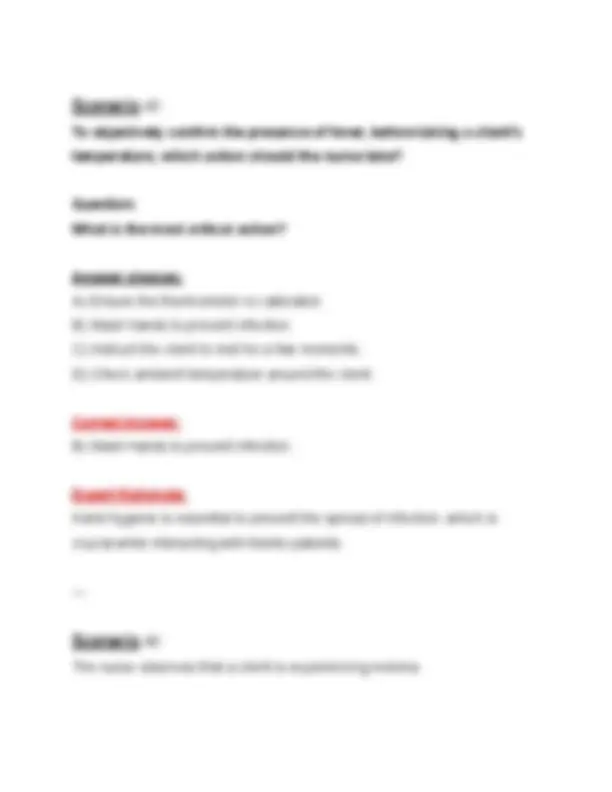
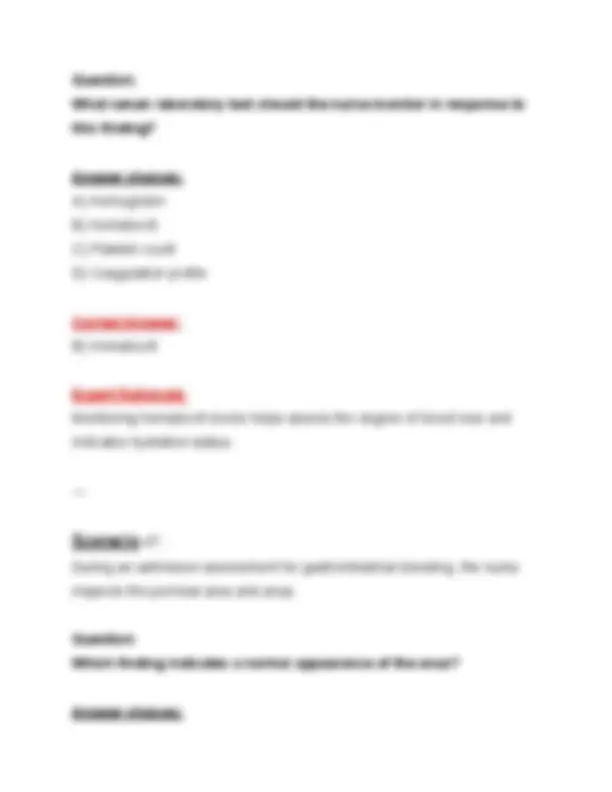
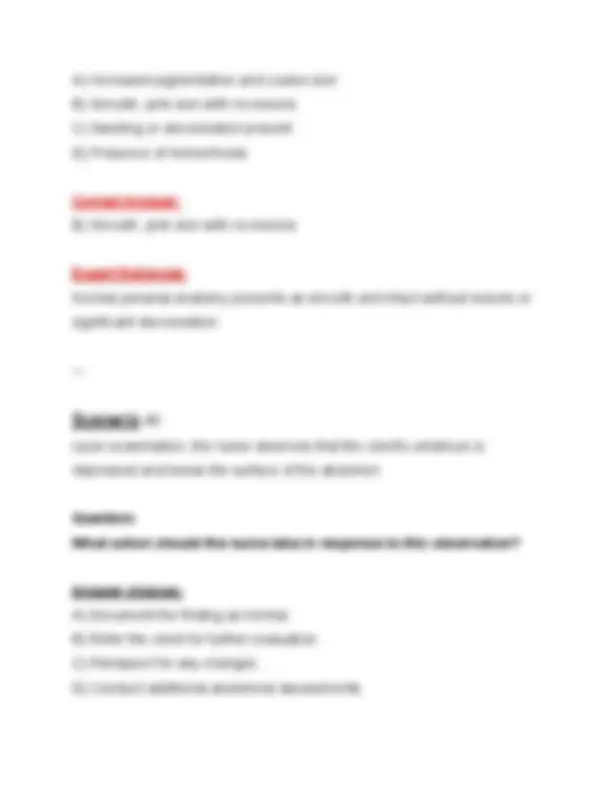
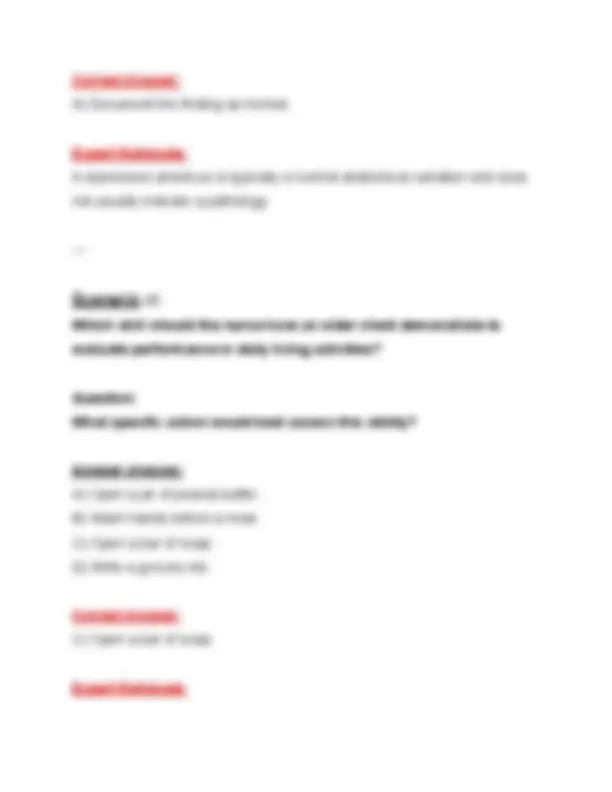
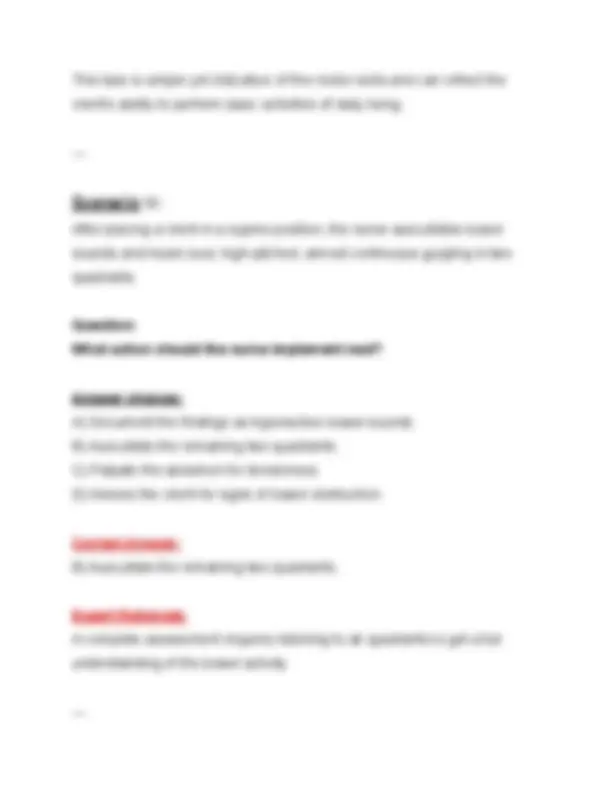
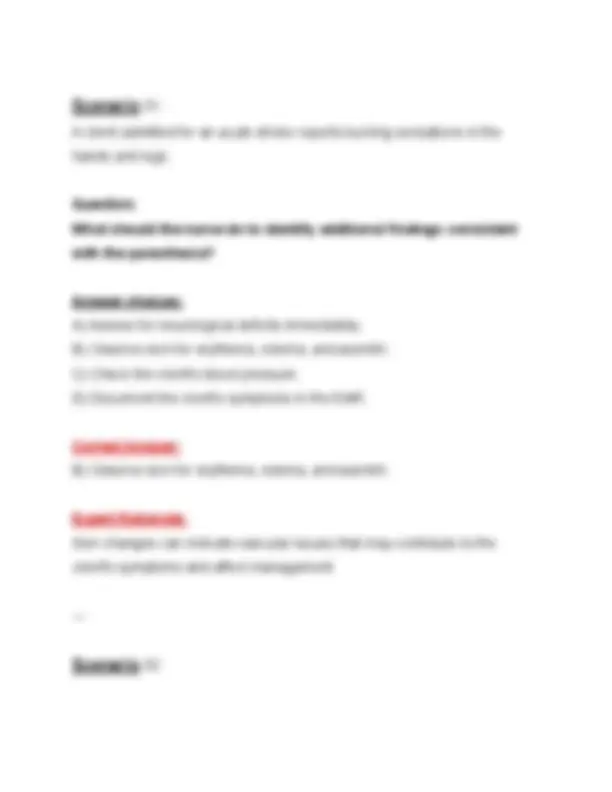
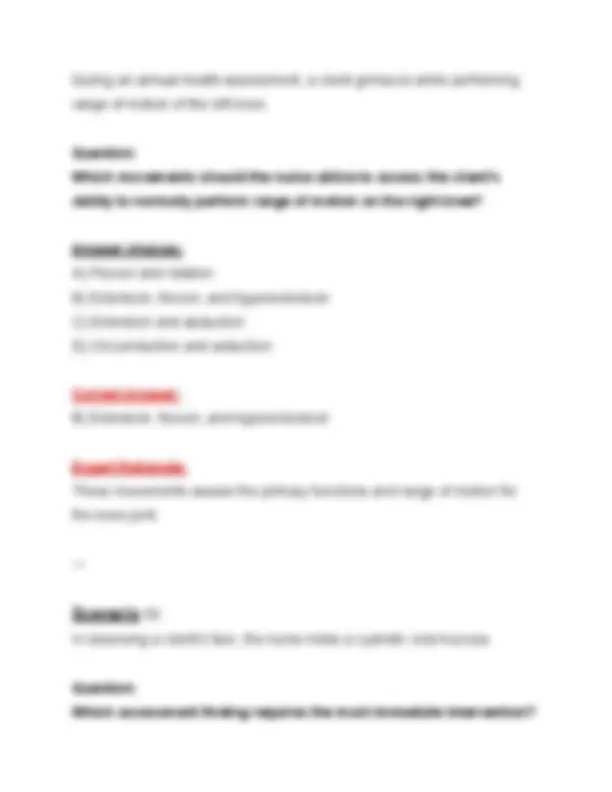
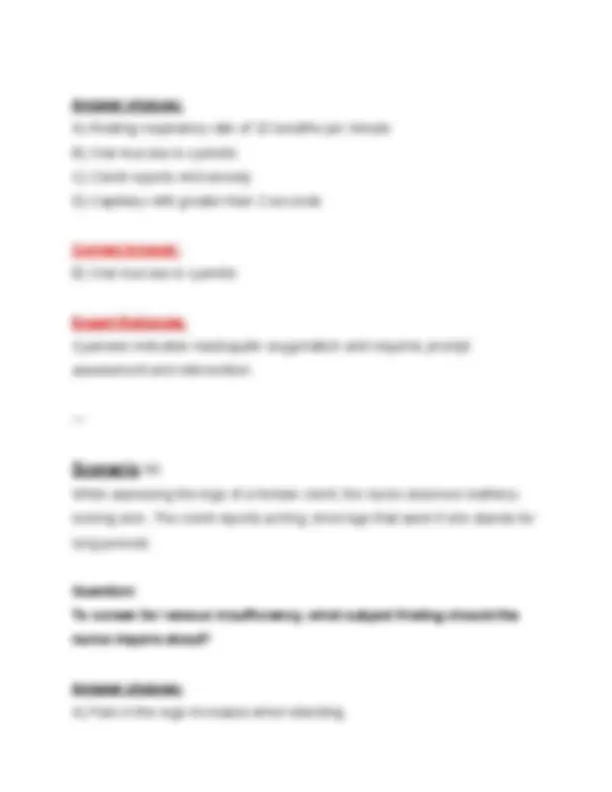
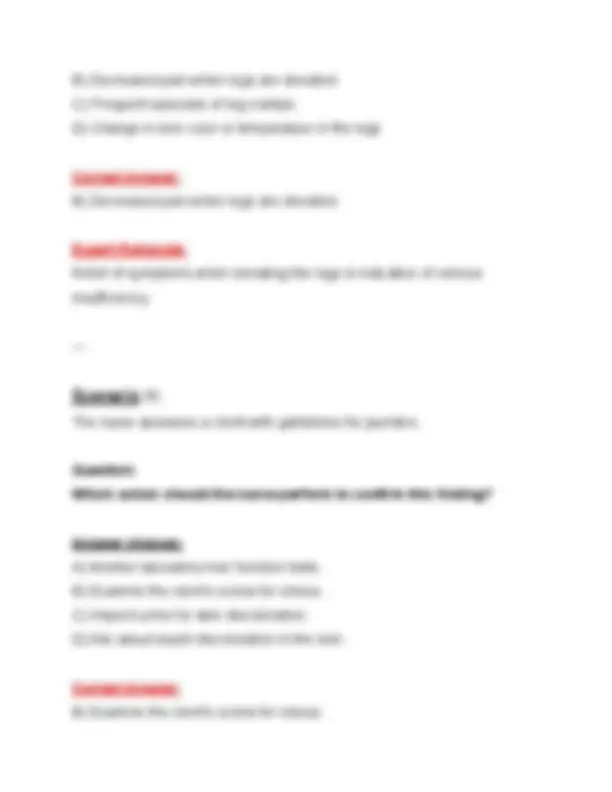
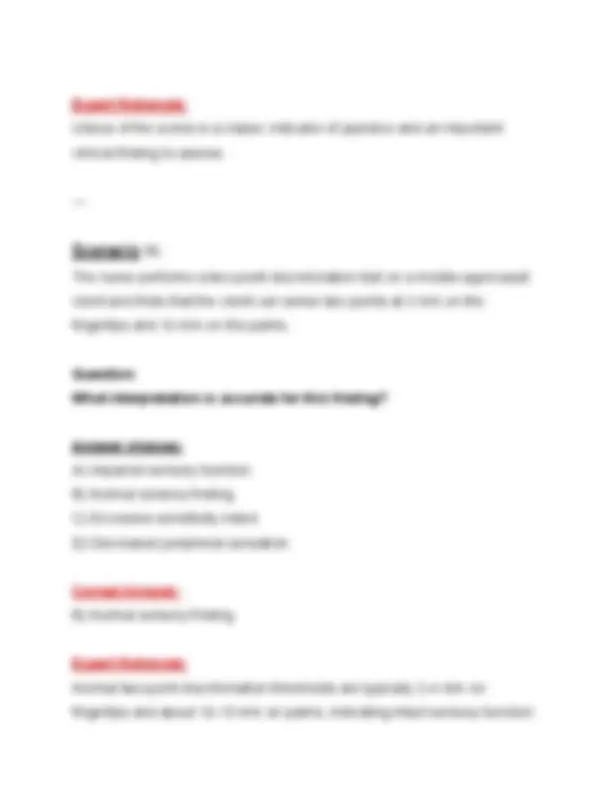
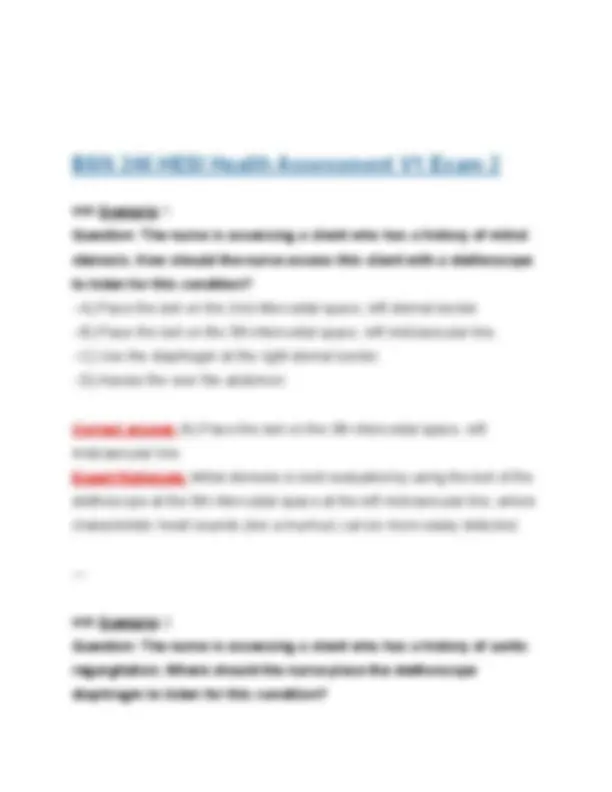
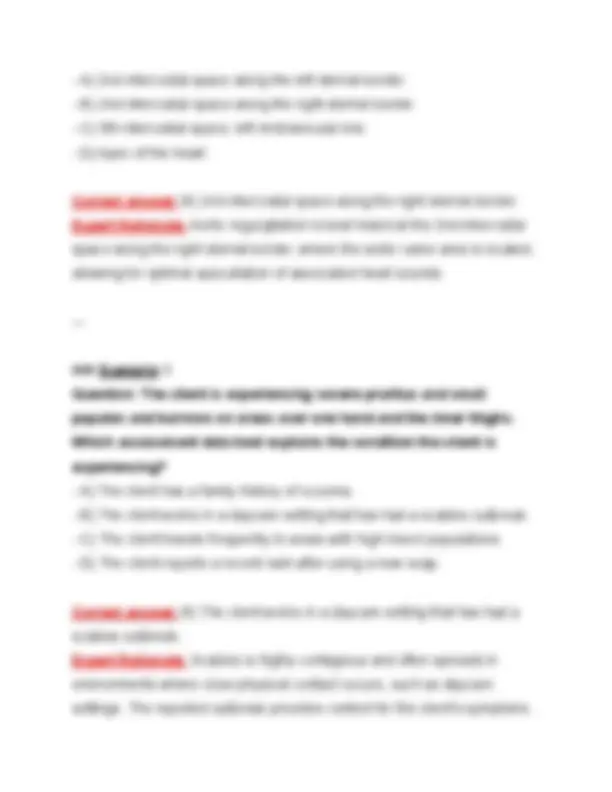
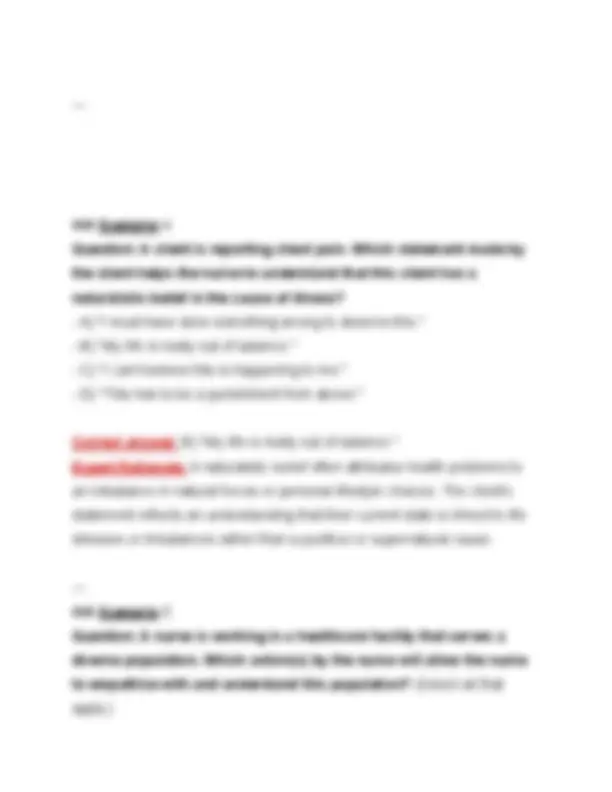
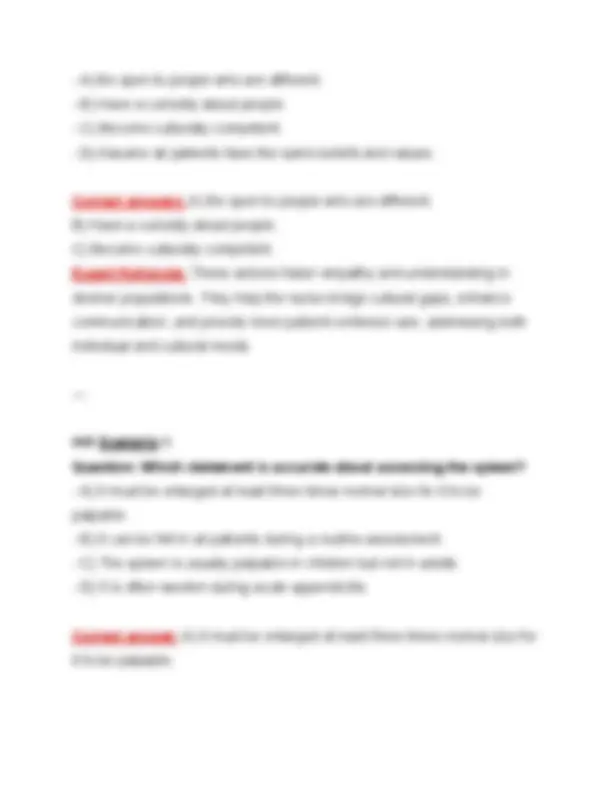
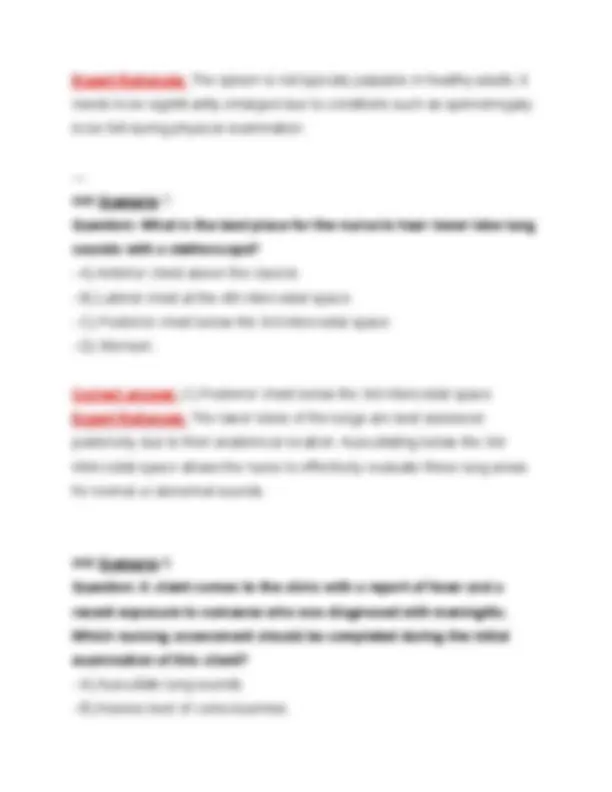
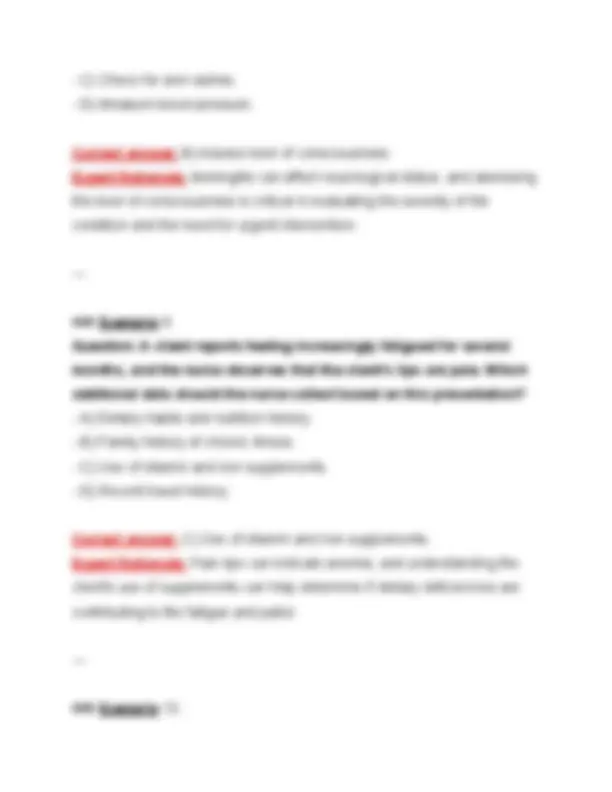
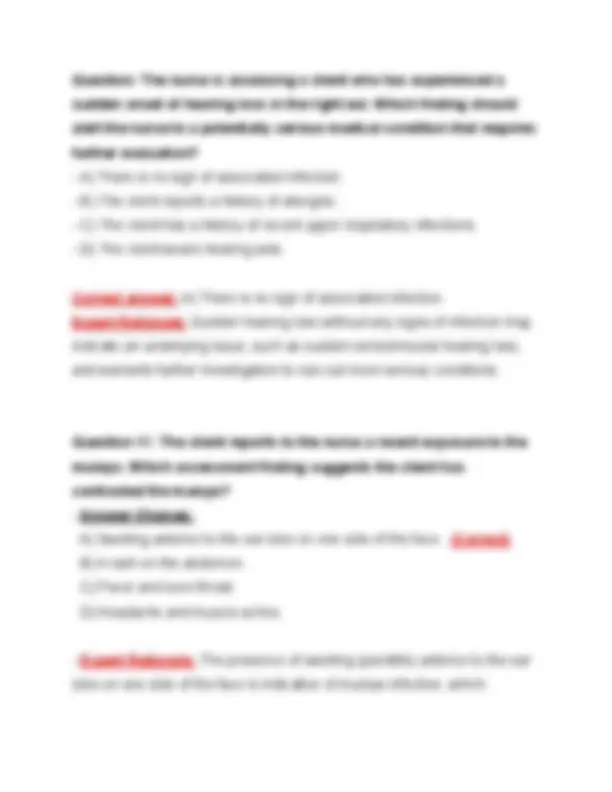
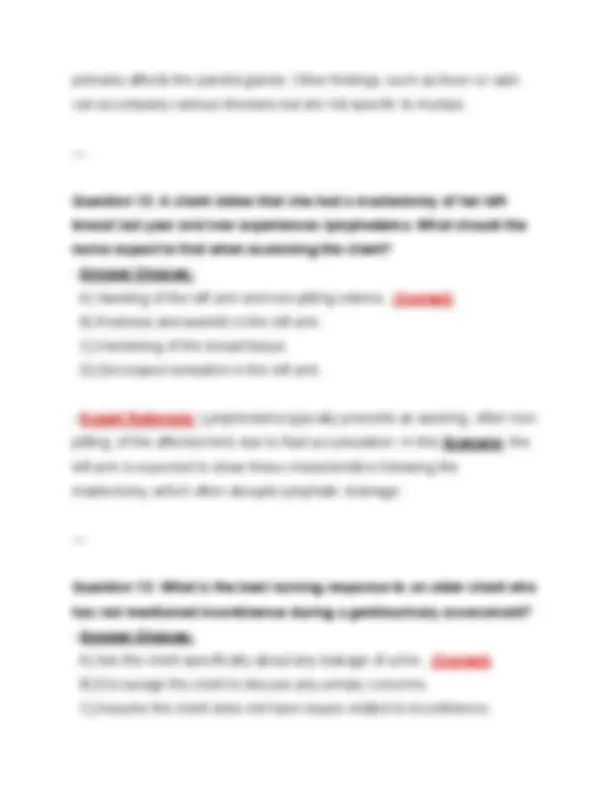
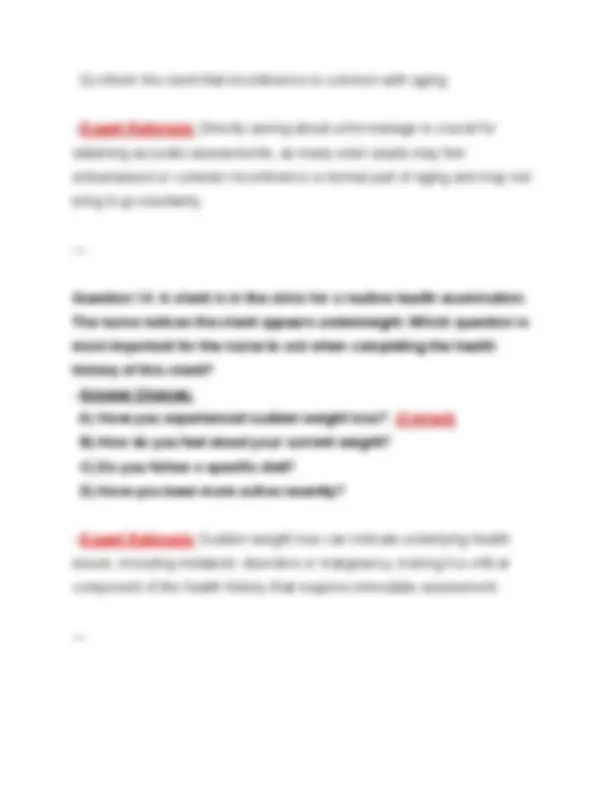
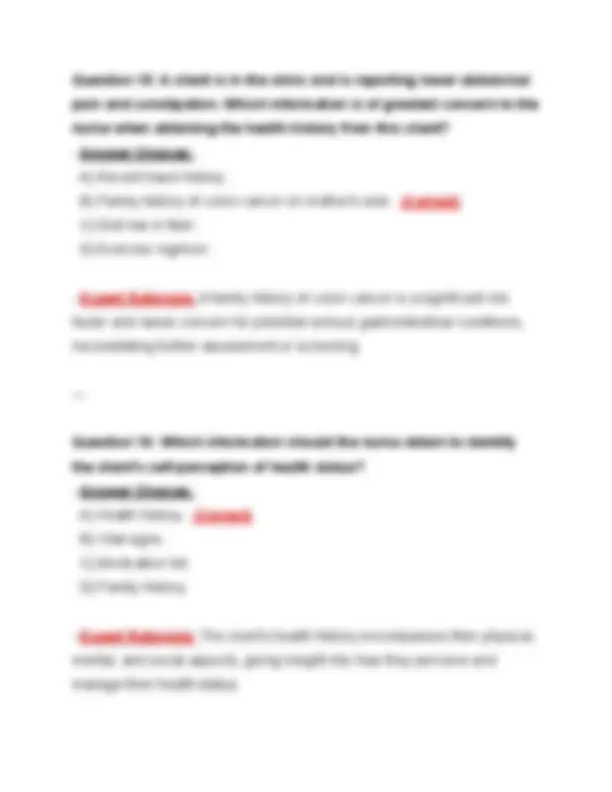
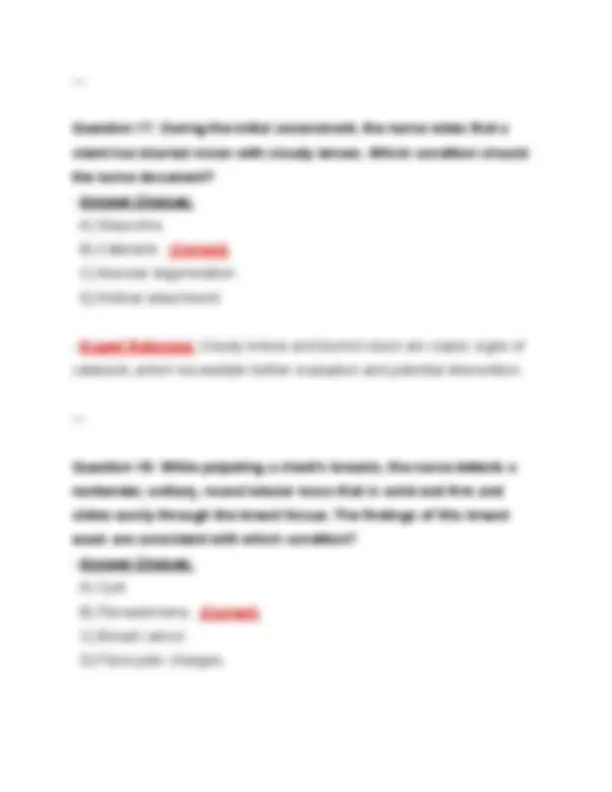
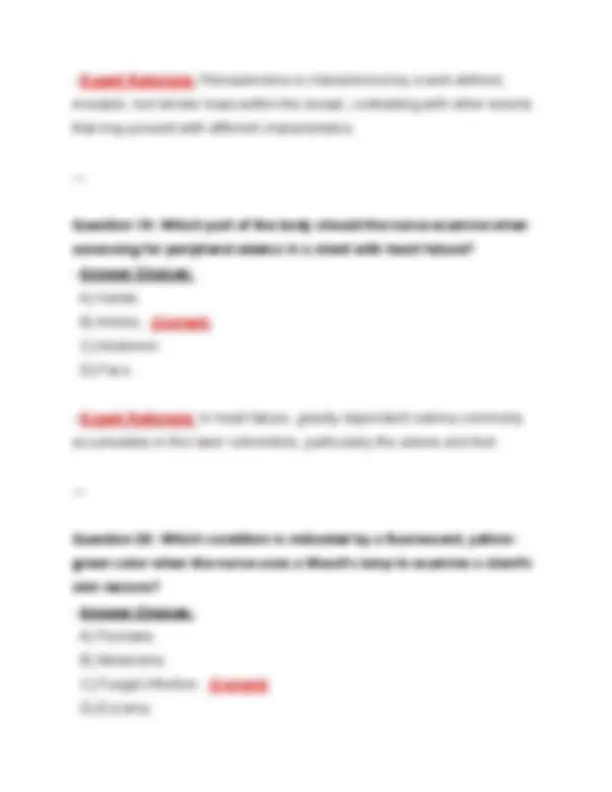
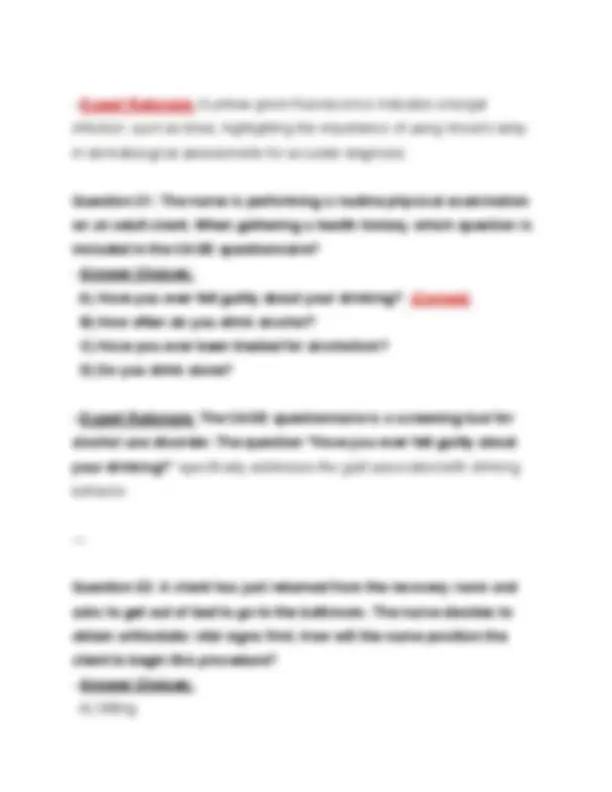
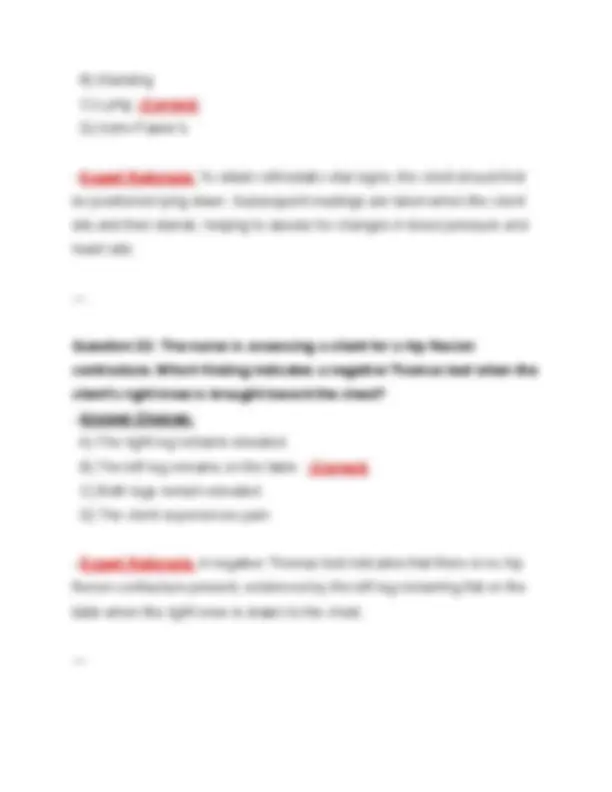
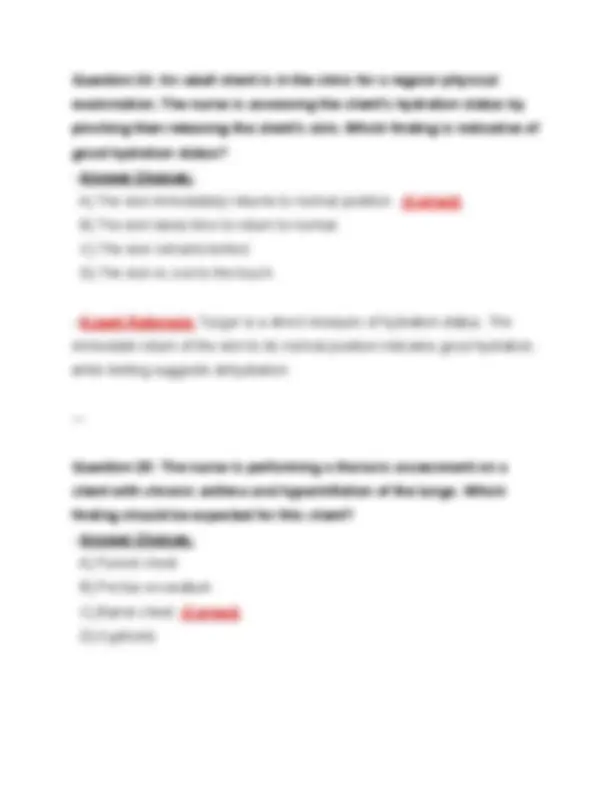
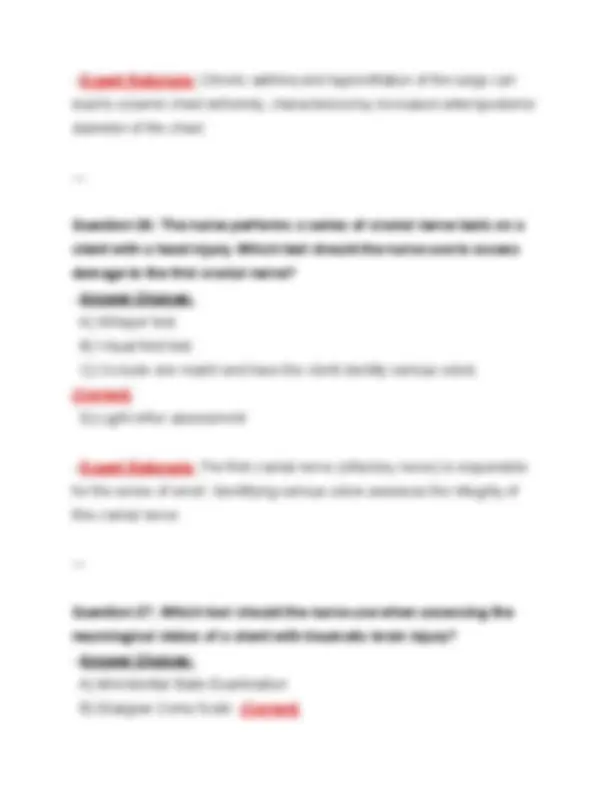
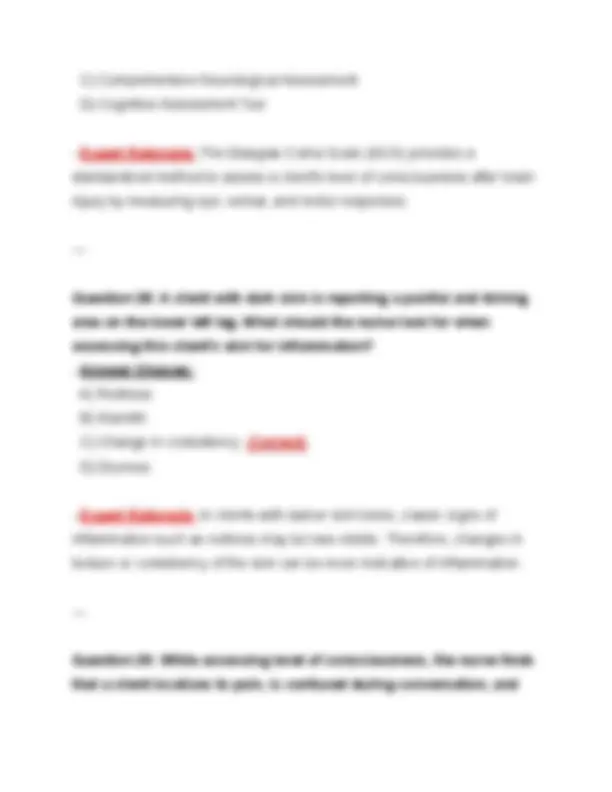
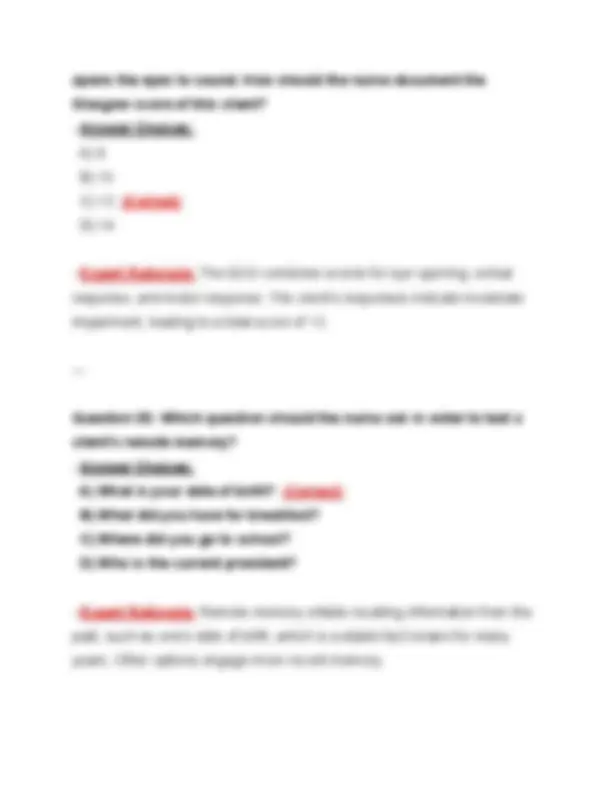

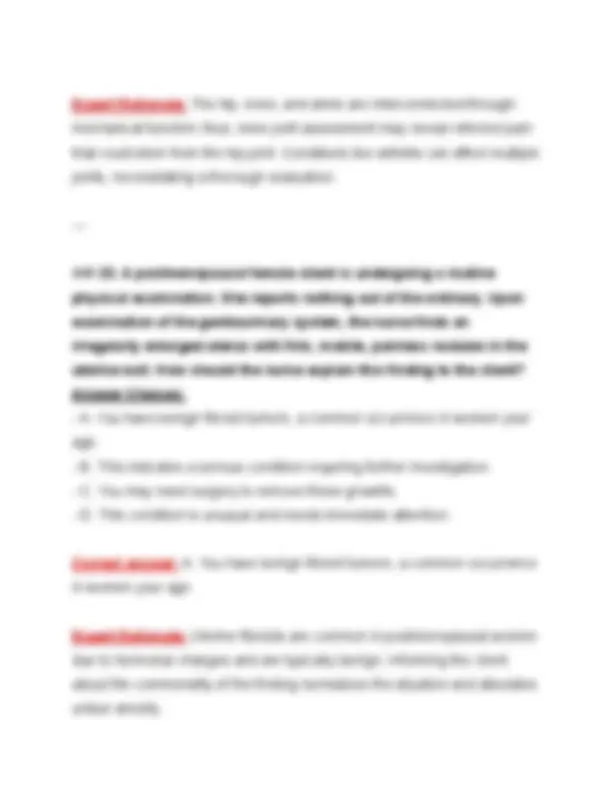
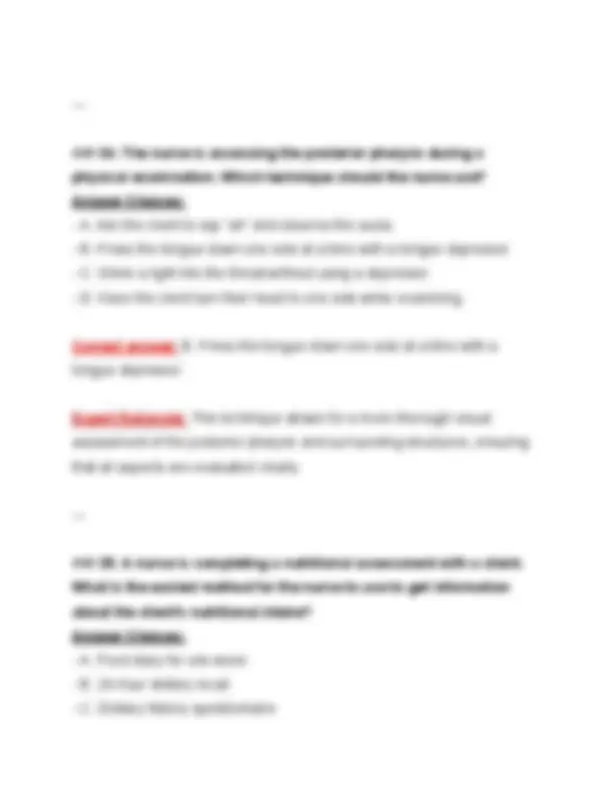
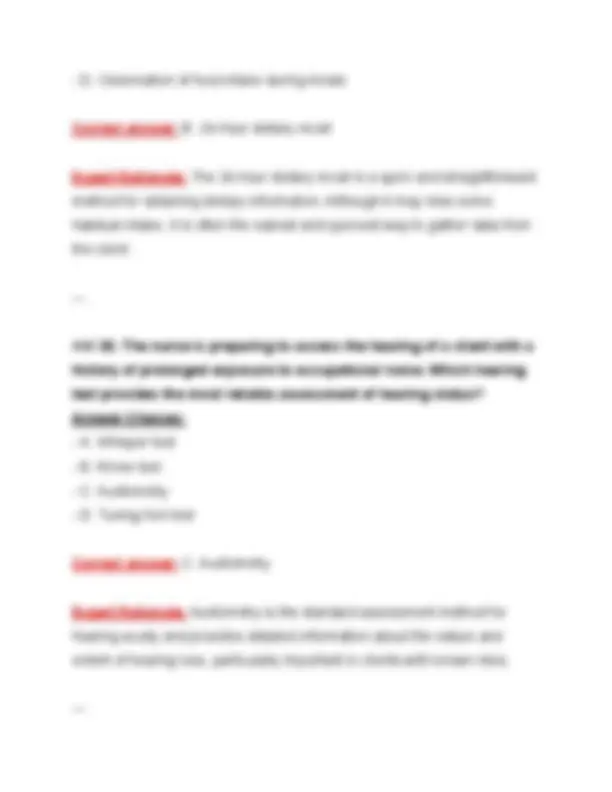
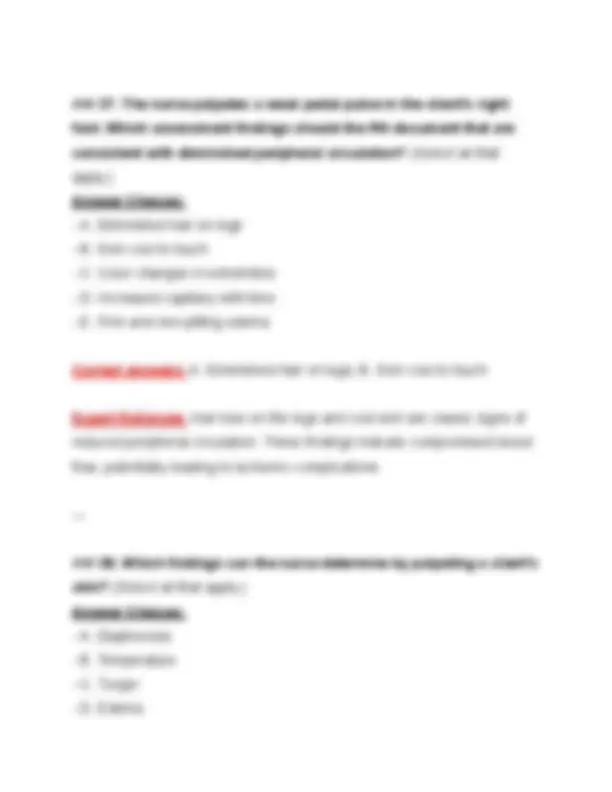
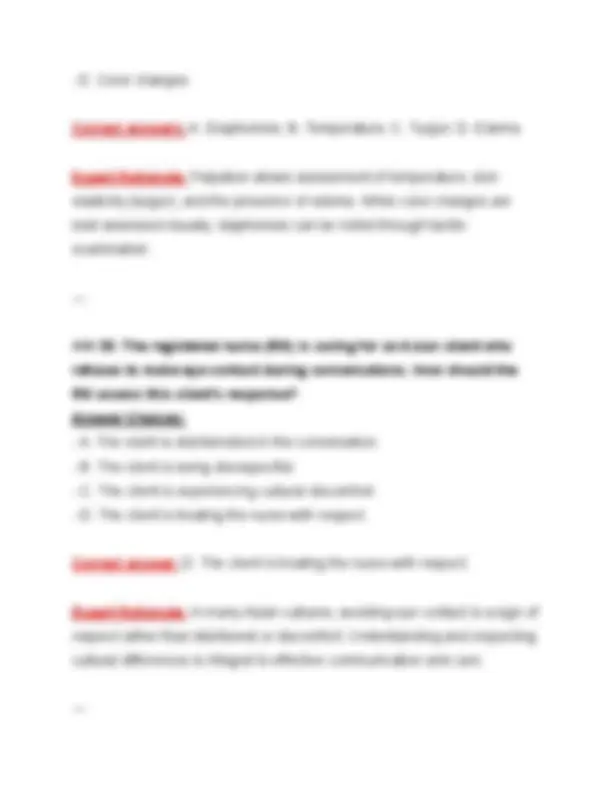
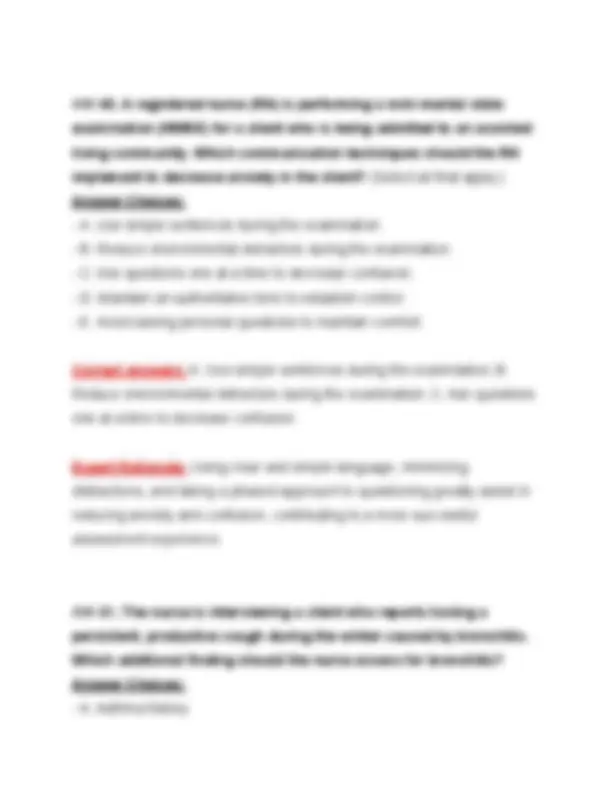
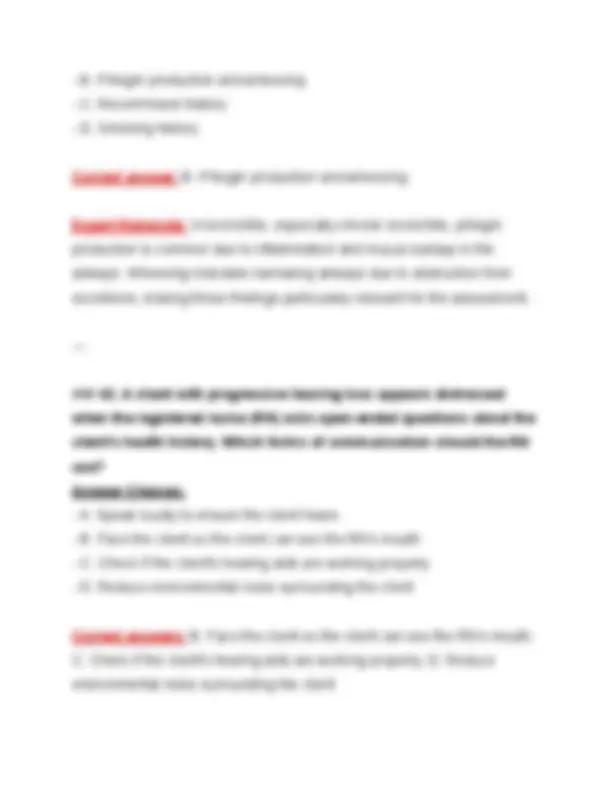
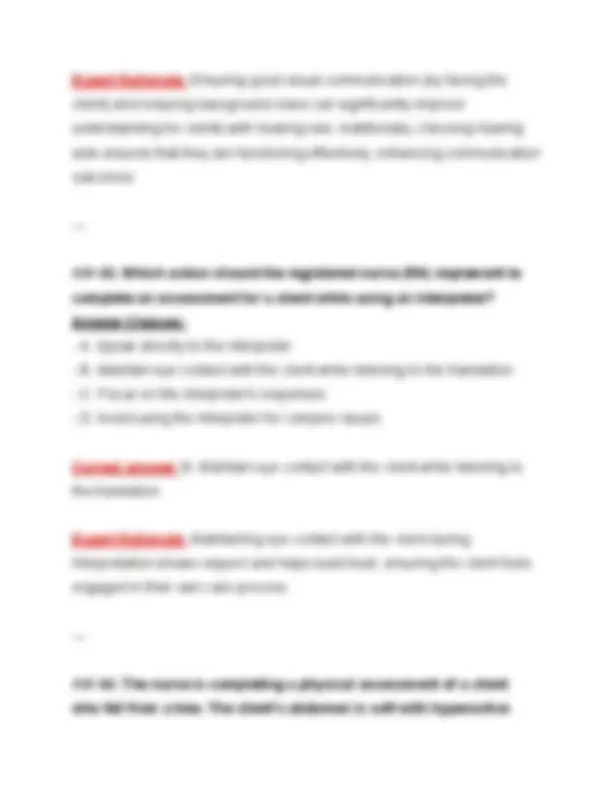
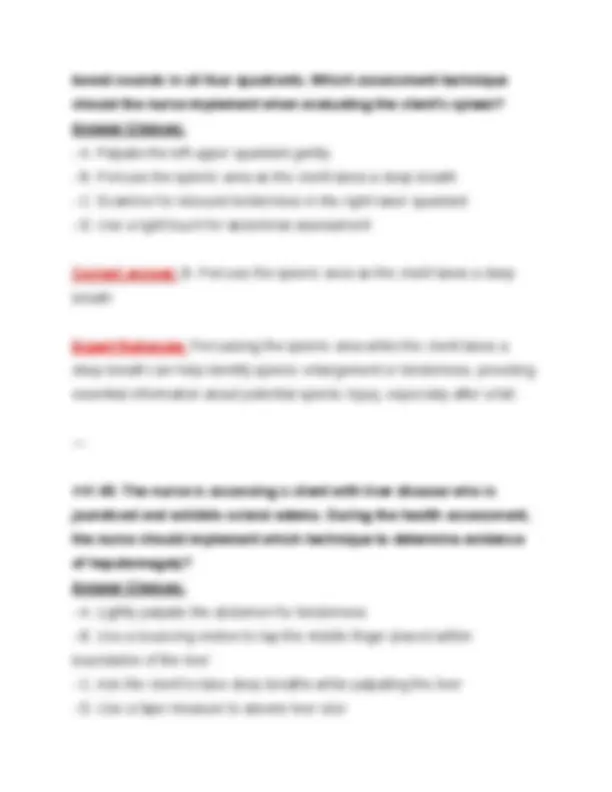
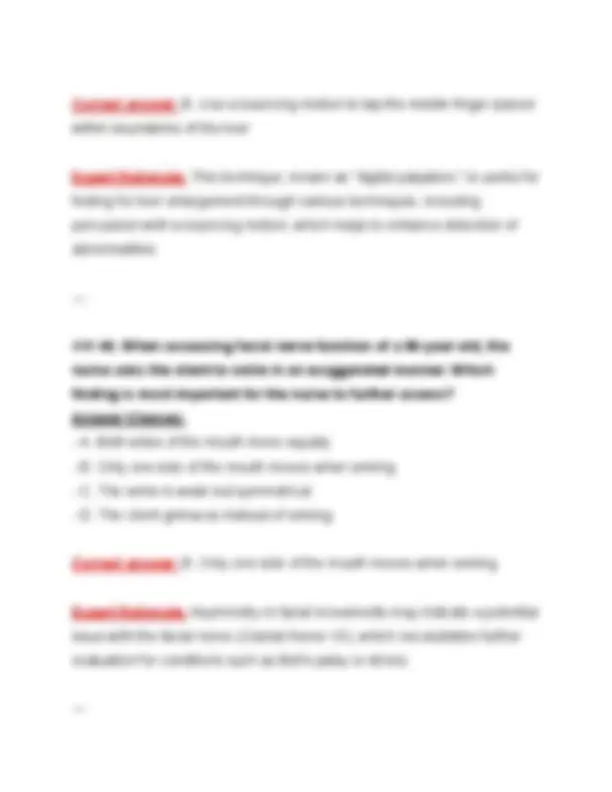
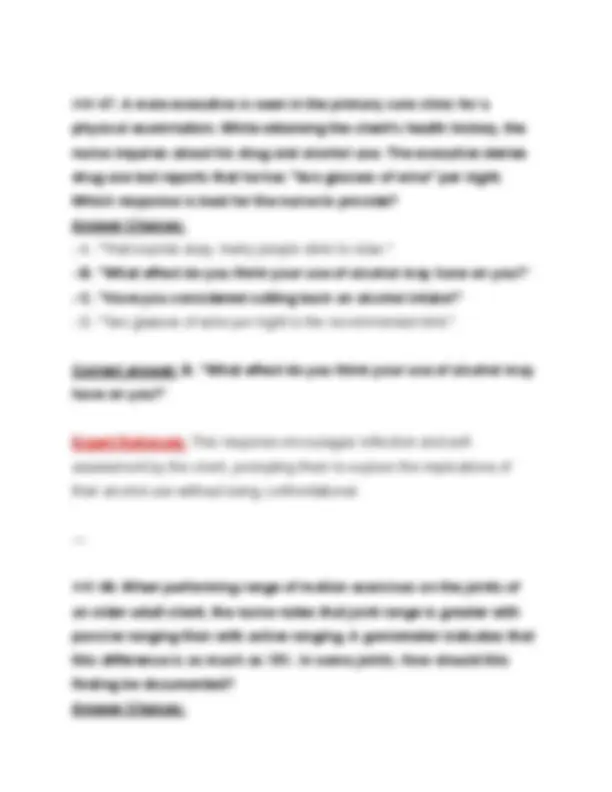
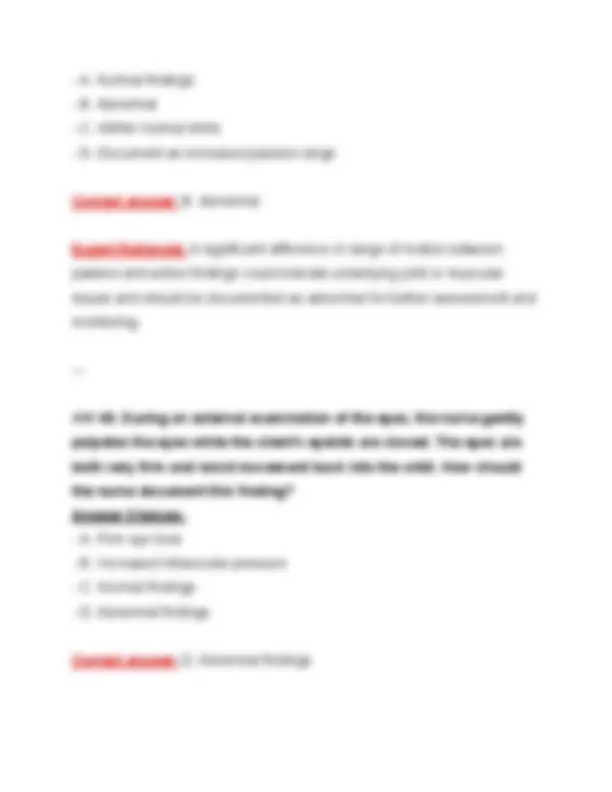
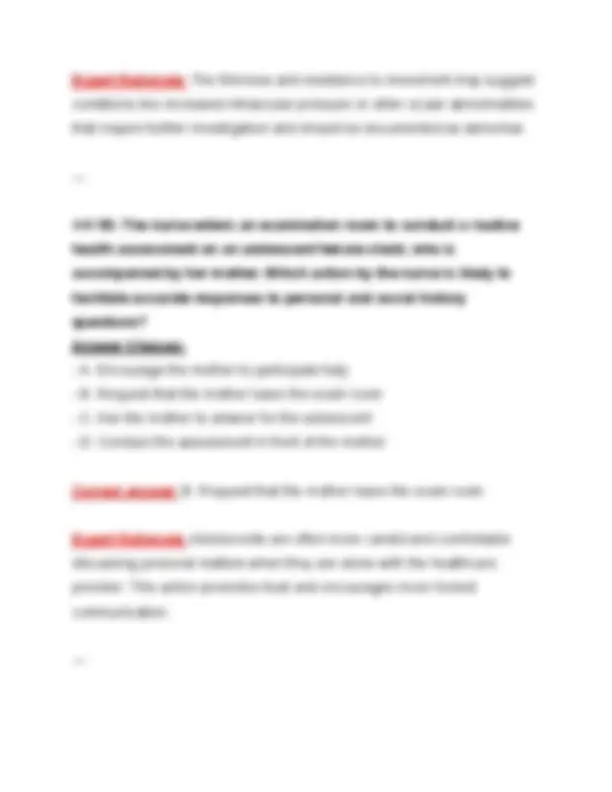
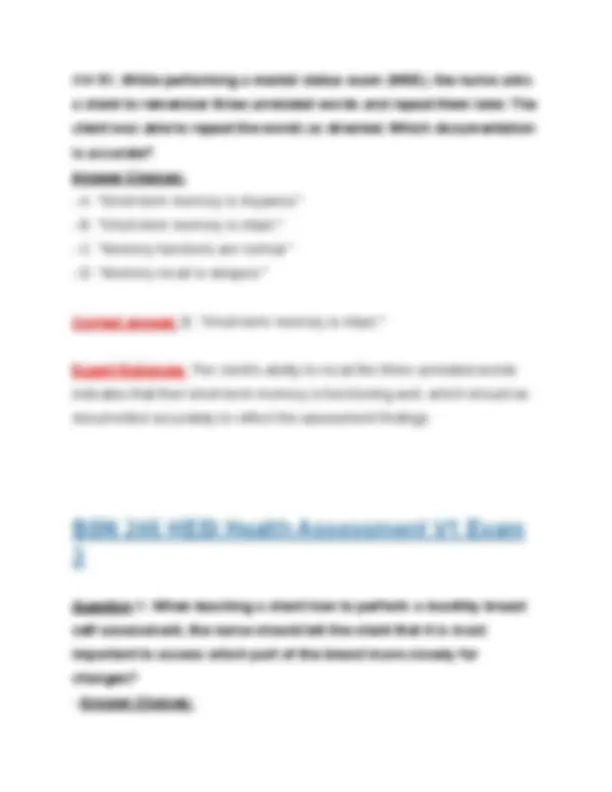
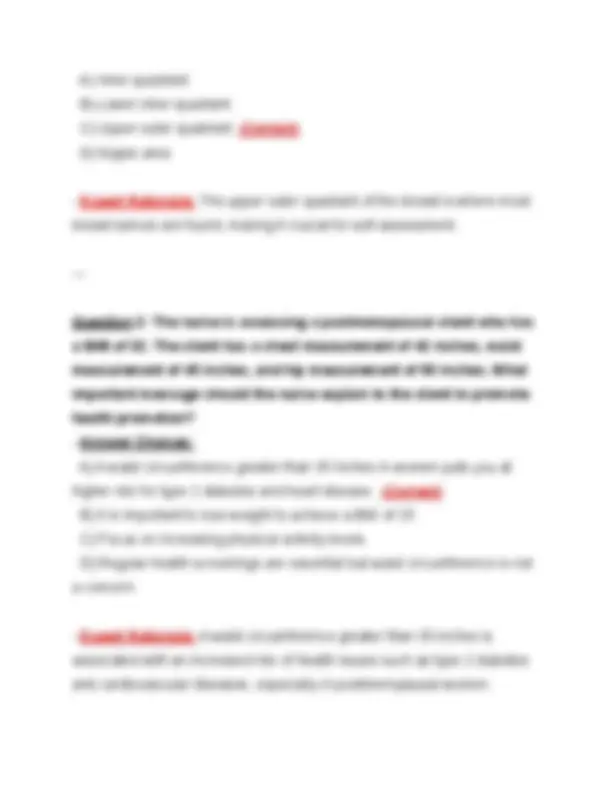
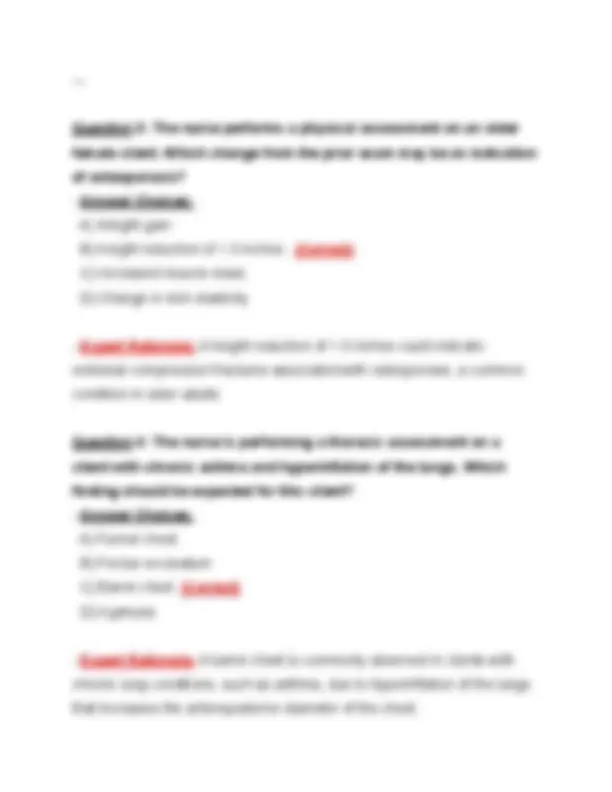
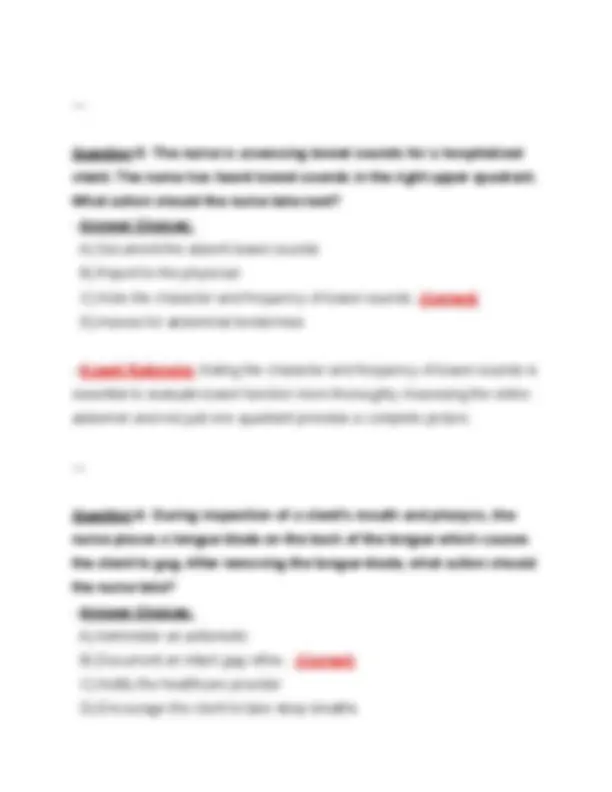
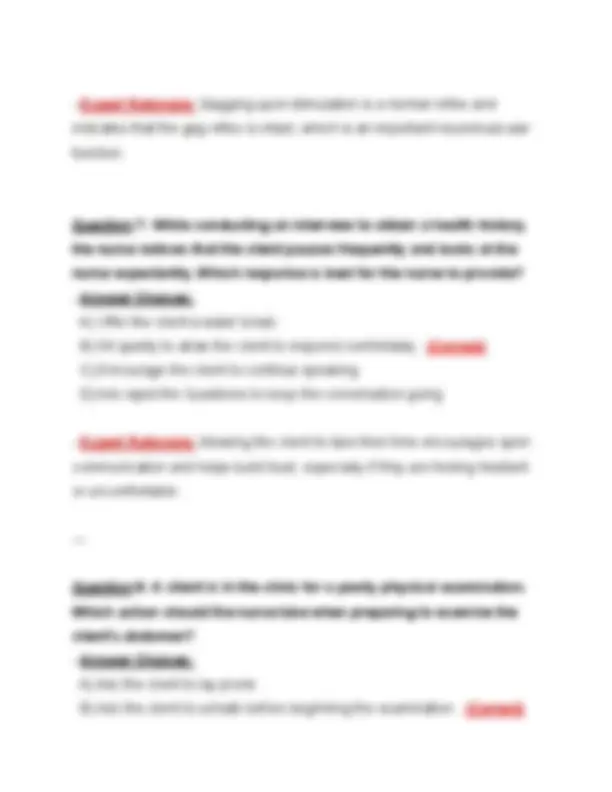
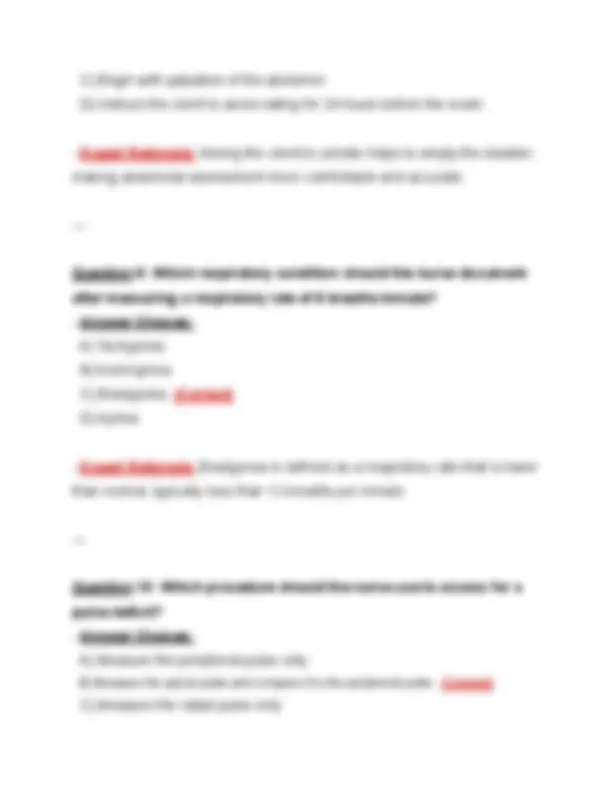
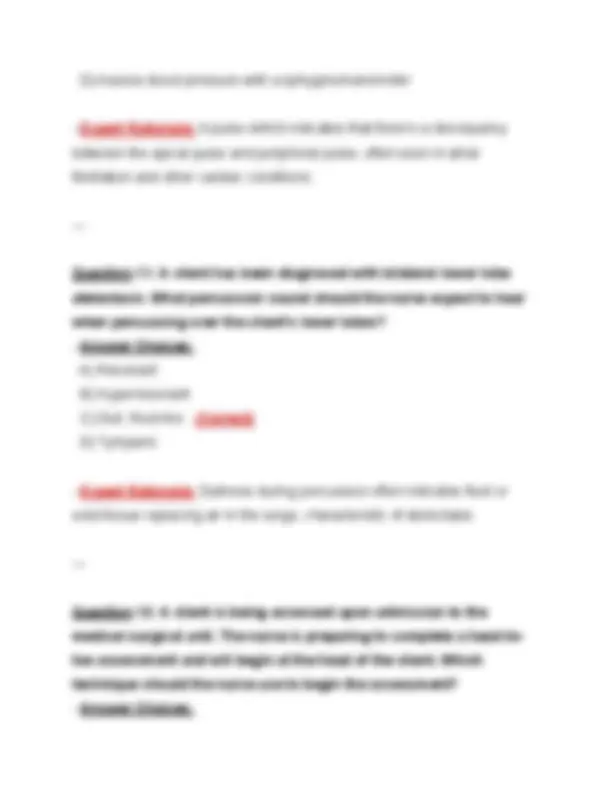
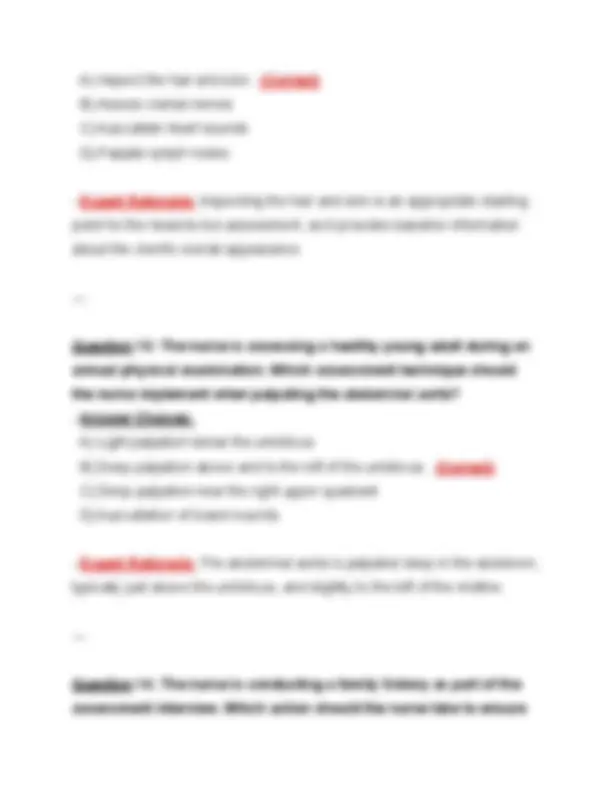
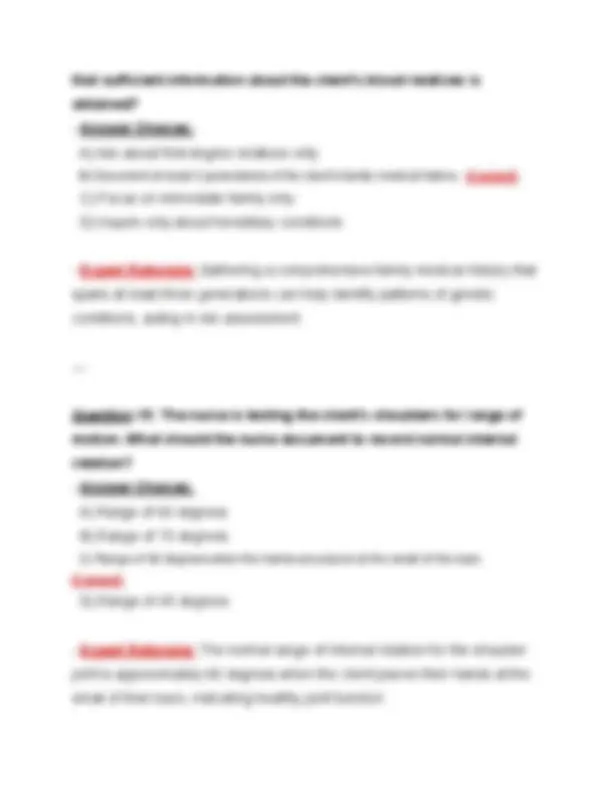
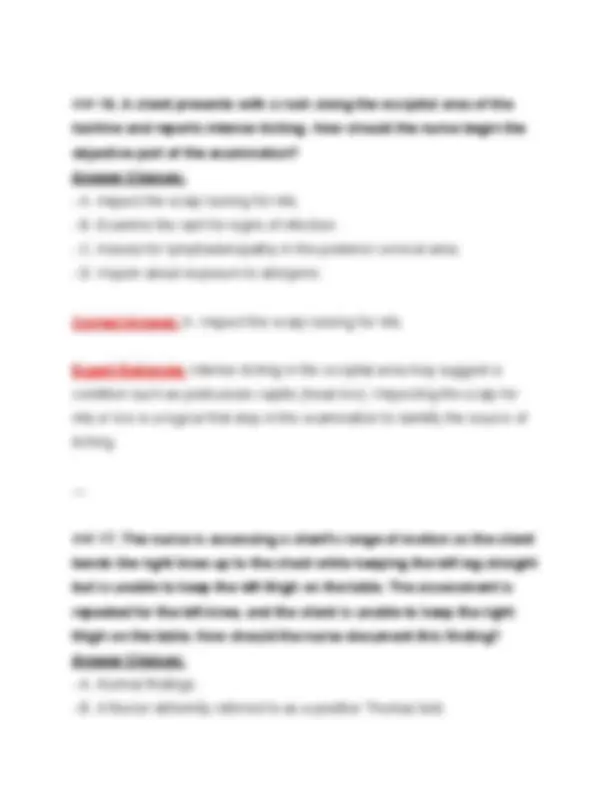
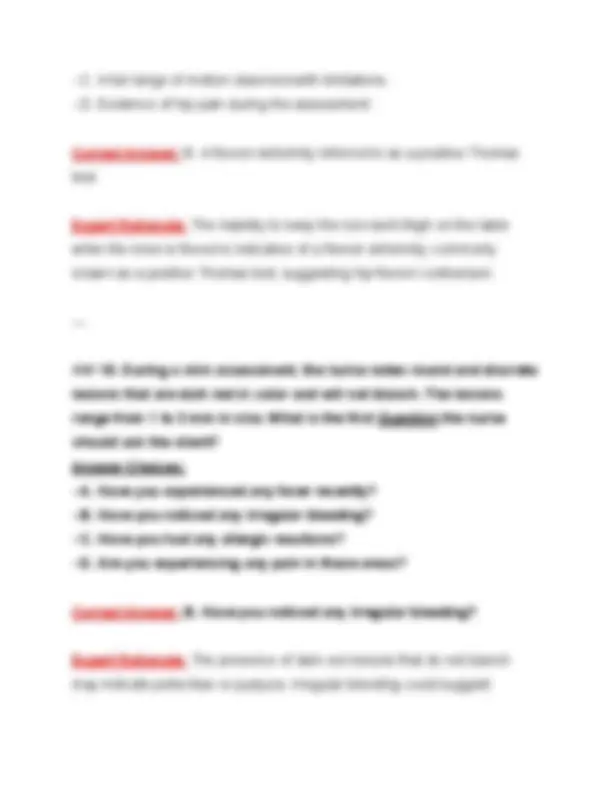
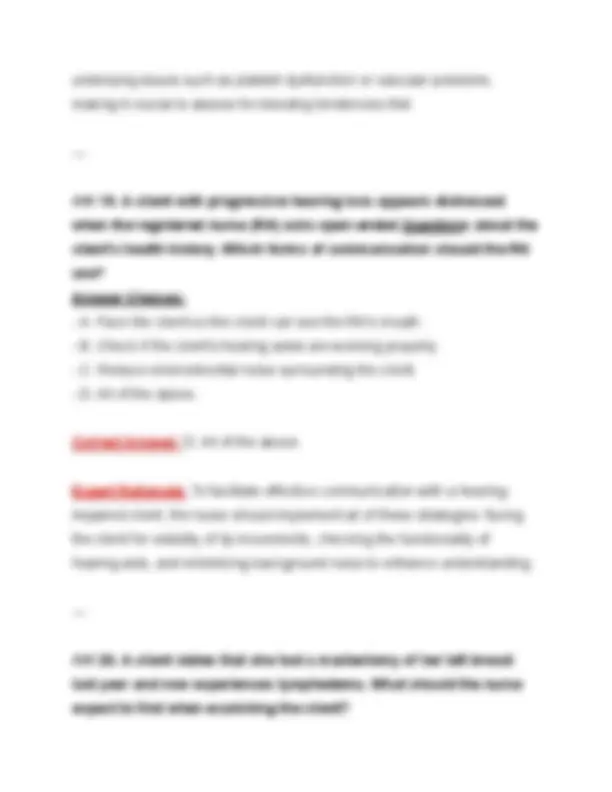
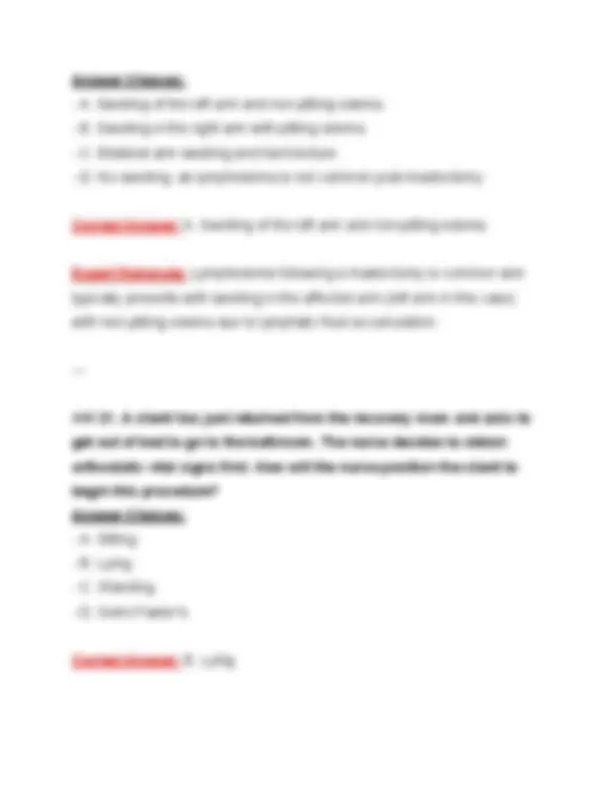
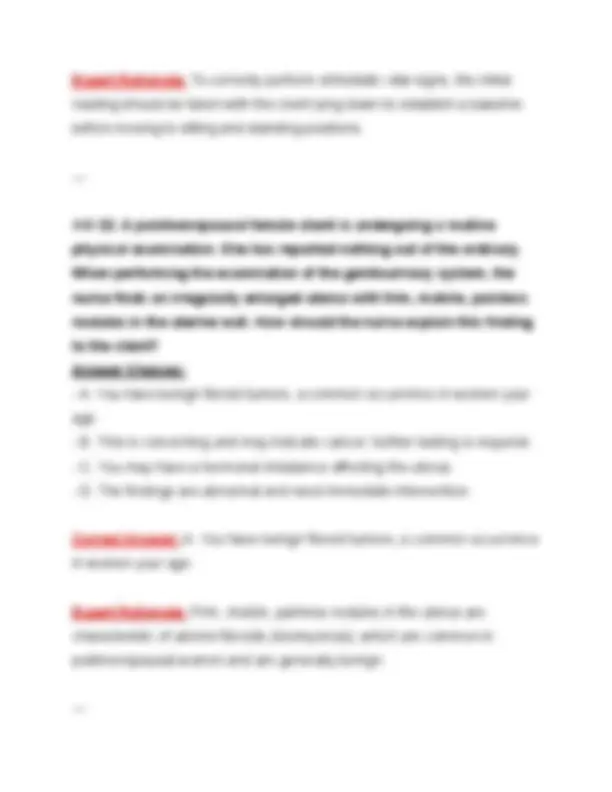
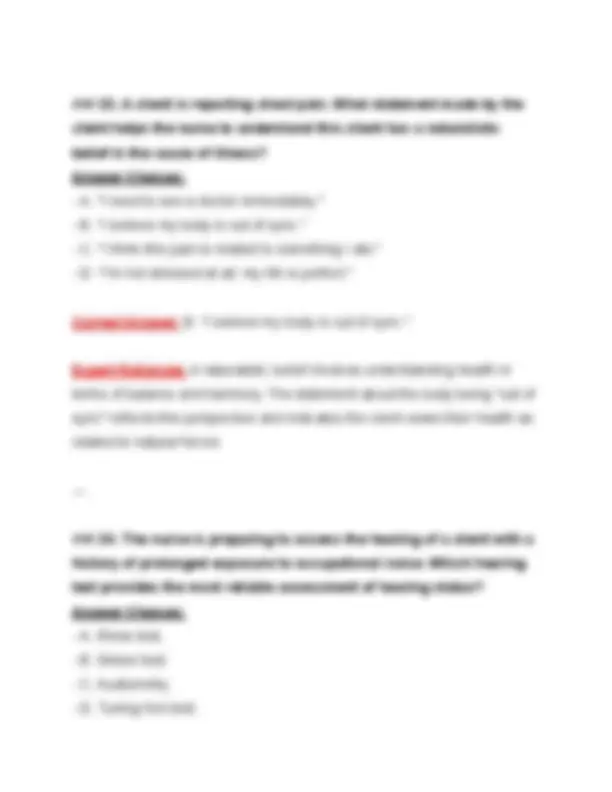
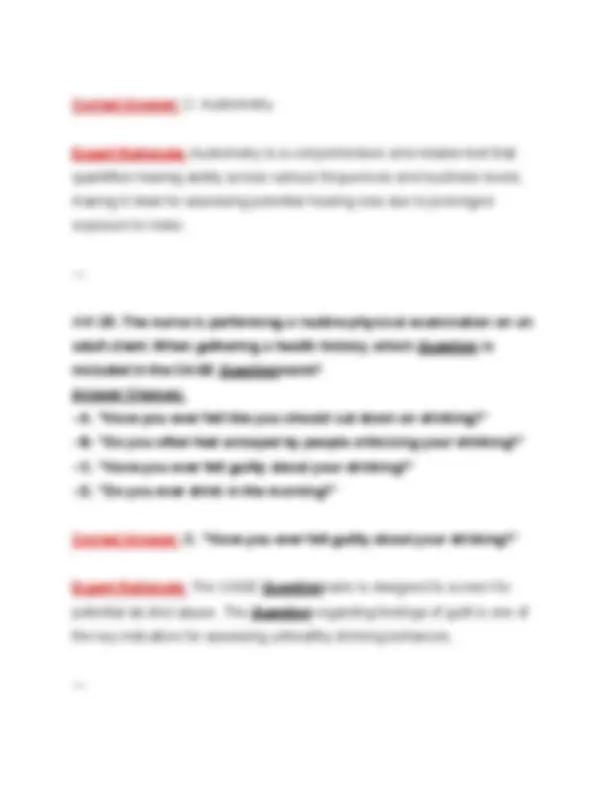
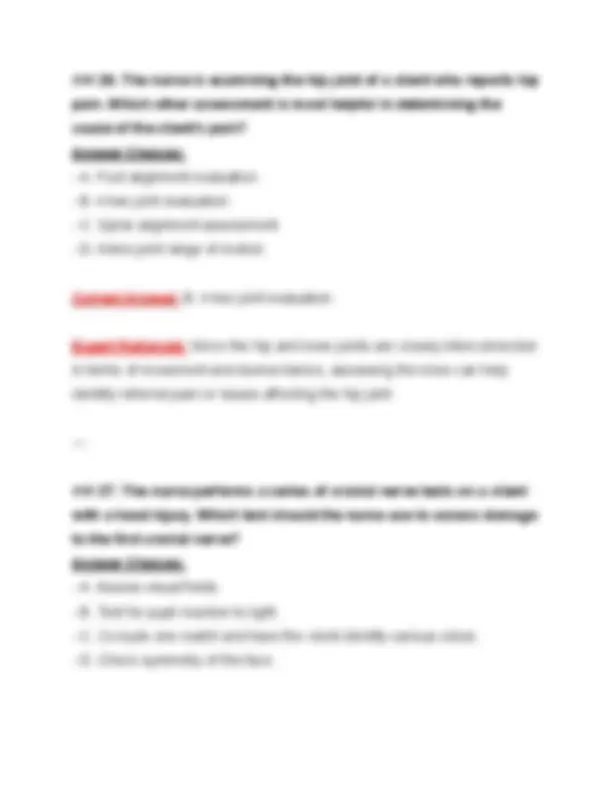
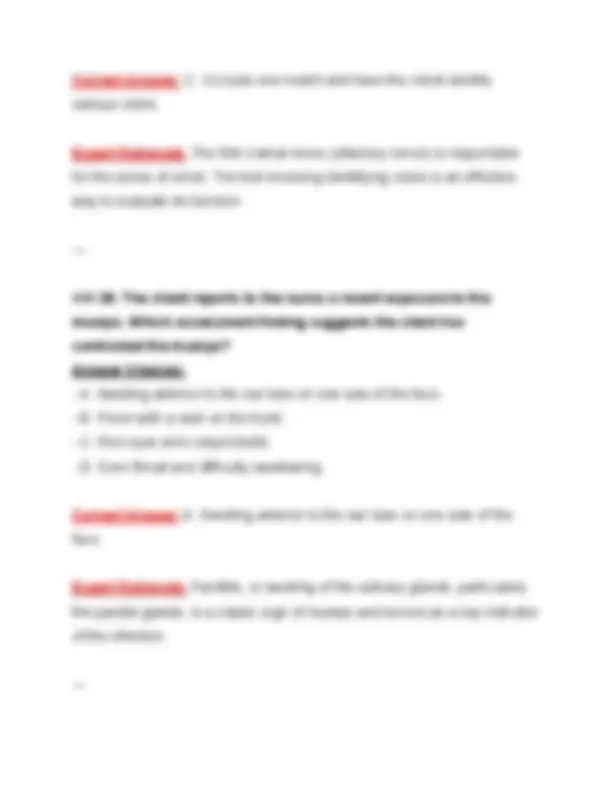
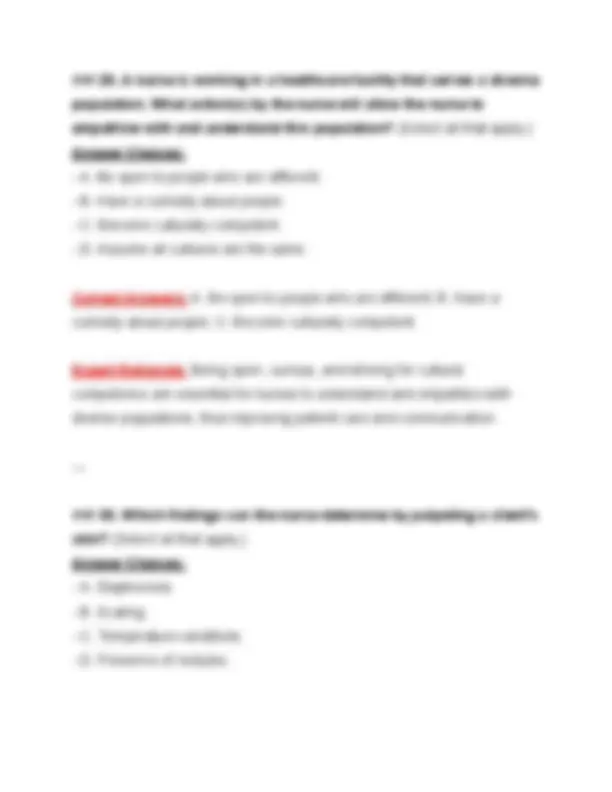
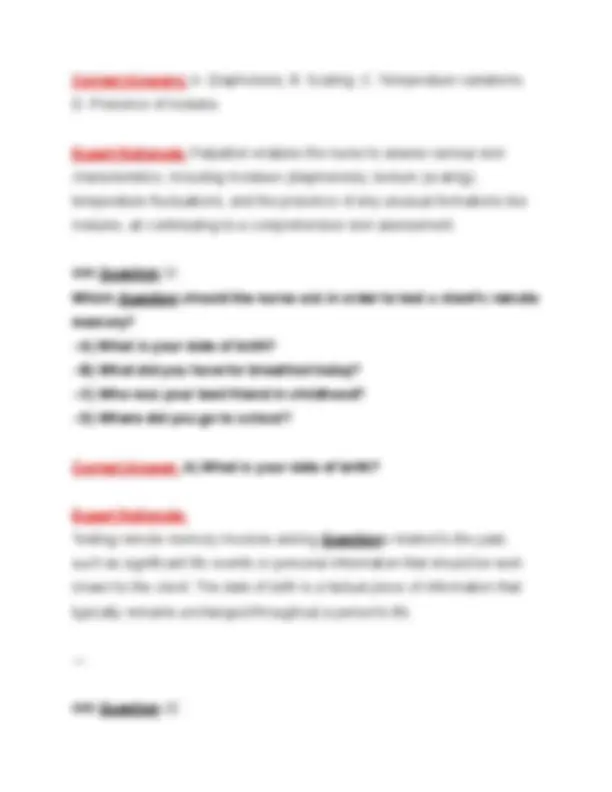
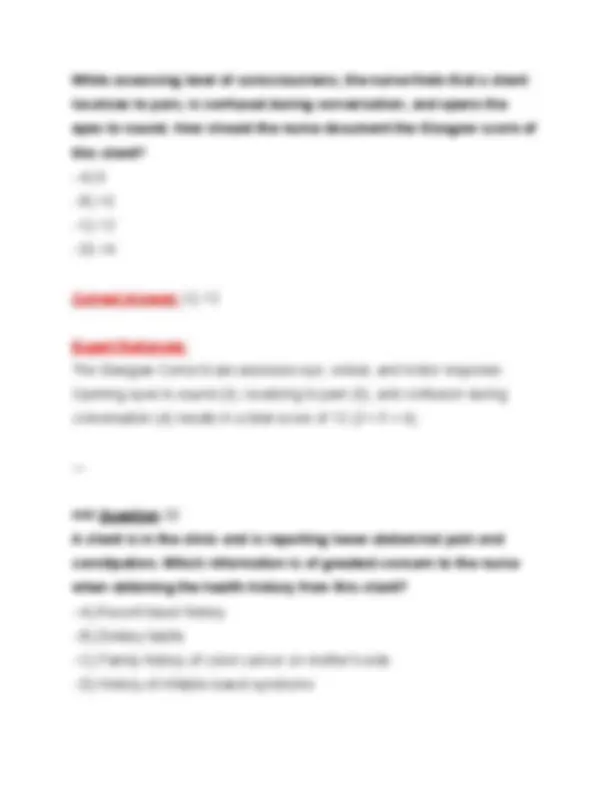


Study with the several resources on Docsity

Earn points by helping other students or get them with a premium plan


Prepare for your exams
Study with the several resources on Docsity

Earn points to download
Earn points by helping other students or get them with a premium plan
Community
Ask the community for help and clear up your study doubts
Discover the best universities in your country according to Docsity users
Free resources
Download our free guides on studying techniques, anxiety management strategies, and thesis advice from Docsity tutors
This BSN HESI 246 Health Assessment V1 Exam (2025) from Nightingale College includes all 3 actual exam versions with verified questions and correct answers. Covers essential nursing health assessment topics including head-to-toe assessments, vital signs, physical examination techniques, and clinical decision-making. Perfect for BSN students preparing for HESI success. HESI 246 health assessment exam, Nightingale College BSN test, health assessment HESI V1 2025, BSN nursing exam questions, HESI V1 actual exam 2025, nursing student test prep, health assessment practice questions, HESI exam 3 versions, BSN clinical skills test, verified HESI answers 2025
Typology: Exams
1 / 119

This page cannot be seen from the preview
Don't miss anything!





























































































Table of Contents
BSN 246 HESI Health Assessment V 1 Exam 1
Question: To assess a client's pupillary reaction to accommodation, what action should the nurse take?
Which information in the client's history requires additional follow-up by the nurse?
Question: While performing a physical assessment, the nurse is unable to palpate the client's pedal pulses. Which action should the nurse take?
Expert Rationale: If pedal pulses are not palpable, using a Doppler allows for non-invasive confirmation of blood flow in the arteries of the foot. Documenting findings accurately and further investigating with the Doppler is essential for evaluating potential vascular compromise.
Question: The nurse asks a female client about the proverb "Glass Houses," and she replies, "It will break the windows." Which conclusion should be documented about this client's response?
Expert Rationale: Abducting the hip joint while the client is in a supine position provides insight into hip mobility and function while minimizing discomfort that may occur in a standing position. Observing range of motion and strength in this position helps confirm suspicions of hip dysfunction.
Question: The nurse assesses a client who is unable to move the arm away from the body. Which term best describes this limitation?
Question: During a physical examination, the nurse notes that the client can only straighten the elbow joint to 20 degrees. How should the nurse document this finding?
Question: The nurse observes that the client is able to bend the wrist backward toward the forearm. What term describes this movement?
Question: When assessing a client's rectal bleeding, which findings should the nurse document?
Question: An older adult male arrives at the healthcare center with lower abdominal discomfort and frequent urination. After a long wait, he returns with only a few drops of urine. Which action should the nurse implement?
A 29-year-old male client informs the nurse that he came to the clinic to see if, "Maybe I have lung cancer or something," and wants to get checked out since, "I can't seem to get rid of this body-wracking dry cough that has been hanging around for the last six weeks." Question:
Answer choices: A) Nasal polyps present. B) Intranasal edema and swelling of turbinates. C) Clear nasal discharge. D) Presence of facial pain on palpation. Correct Answer: B) Intranasal edema and swelling of turbinates. Expert Rationale: Edema and swelling of the turbinates are classic signs of allergic rhinitis, distinguishing it from other nasal or sinus conditions.
When completing a health assessment for a client being admitted with respiratory complaints, which communication technique should the nurse use to obtain thorough history information? Question: What is the best approach for the nurse to gather information? Answer choices: A) Closed-ended questions. B) Open-ended questions.
C) Multiple-choice queries. D) Reflective listening. Correct Answer: B) Open-ended questions. Expert Rationale: Open-ended questions allow the client to provide detailed responses and elaborate on their symptoms, which is vital for comprehensive health assessments.
During the care of a client post-abdominal aortic aneurysm repair, the nurse needs to auscultate the abdomen. Question: What is the best action for the nurse to take prior to auscultation? Answer choices: A) Turn off suction while auscultating. B) Encourage deep breaths. C) Ask the client about pain levels. D) Document baseline bowel sounds. Correct Answer:
Pain upon percussion of the costovertebral angle is indicative of kidney inflammation and aligns with the symptoms of pyelonephritis.
An adult client presents with complaints of gnawing epigastric pain. The pain is worse when hungry and abates if he eats something. Question: What problem do these symptoms suggest? Answer choices: A) Gastritis. B) Peptic ulcer disease. C) Gastroesophageal reflux disease (GERD). D) Acute pancreatitis. Correct Answer: B) Peptic ulcer disease. Expert Rationale: The description of pain that worsens with hunger and improves with food is characteristic of peptic ulcers, which are aggravated by an empty stomach.
An older male client reports to the nurse that his feet are cold. Before covering the client's feet, which assessment(s) should the nurse complete? Select all that apply. Question: Which assessments are most appropriate? Answer choices: A) Observe color of the feet and toes. B) Assess volume of the pedal pulses. C) Palpate dorsal surface of feet for warmth. D) Measure the temperature of the feet using a thermometer. E) Check capillary refill time. Correct answers: A) Observe color of the feet and toes. B) Assess volume of the pedal pulses. C) Palpate dorsal surface of feet for warmth. Expert Rationale: These assessments provide critical information on circulation and local perfusion, helping to identify potential vascular issues.
Question: Which information should the nurse obtain from the client that may explain the appearance of the nails? Answer choices: A) Recent weight loss. B) History of iron deficiency anemia. C) Family history of nail disorders. D) Dietary habits. Correct Answer: B) History of iron deficiency anemia. Expert Rationale: Brittle nails and concave nail shapes (koilonychia) are commonly associated with iron deficiency anemia, thus warranting further assessment in this area.
When obtaining a client's health history related to smoking cigarettes, the nurse plans to determine the client's smoking pack years. Question: Which information should the nurse obtain for this calculation? Select all that apply.
Answer choices: A) Packs of cigarettes smoked per day. B) Number of years the client smoked. C) Age at which the client began smoking. D) Type of cigarettes smoked. E) Previous attempts to quit smoking. Correct answers: A) Packs of cigarettes smoked per day. B) Number of years the client smoked. Expert Rationale: Calculating pack years involves multiplying the number of cigarette packs smoked daily by the number of years smoked, providing valuable information about smoking history and associated risk factors.
During an admission assessment, the nurse wants to evaluate a client's speech patterns. Question: Which approach should the nurse use? Answer choices: